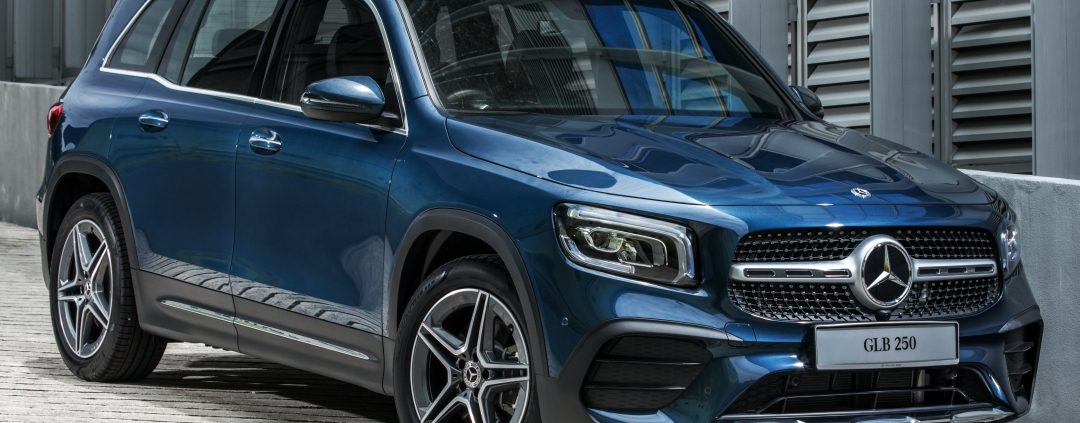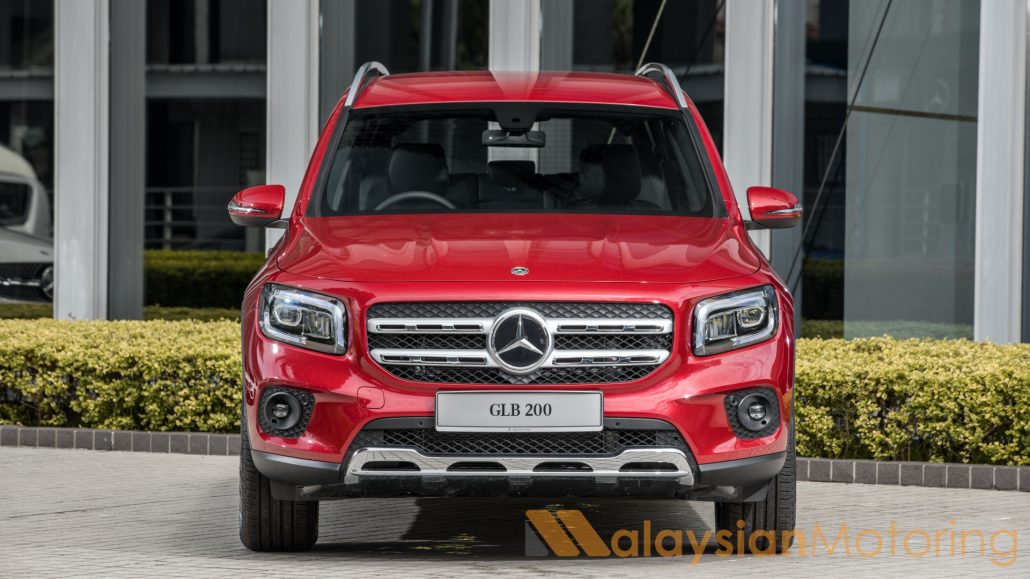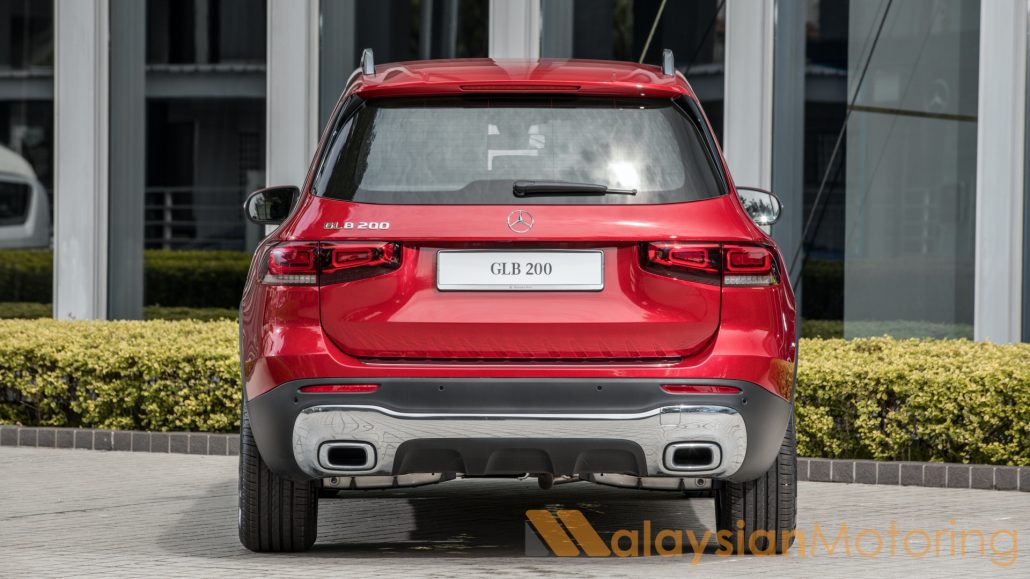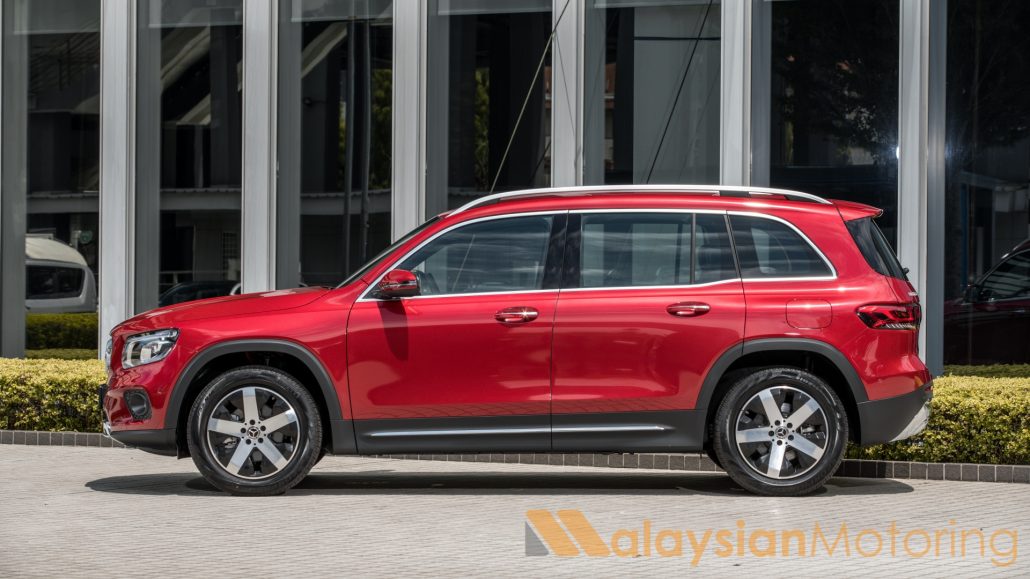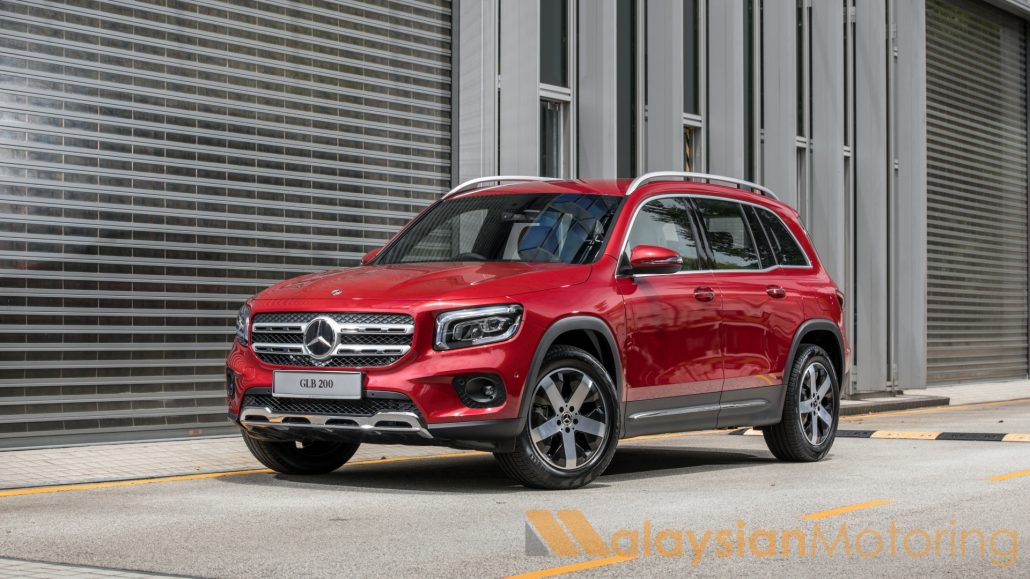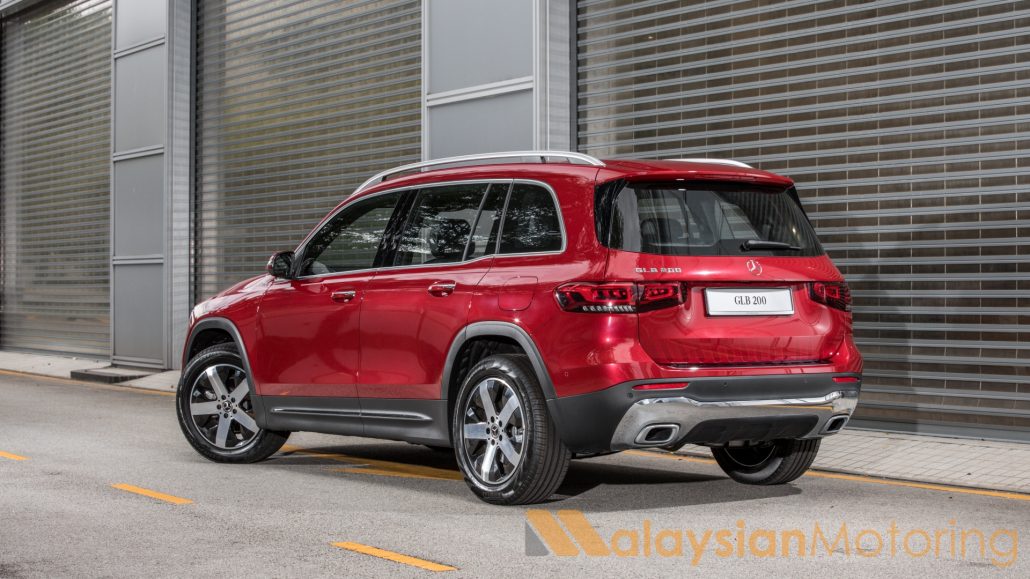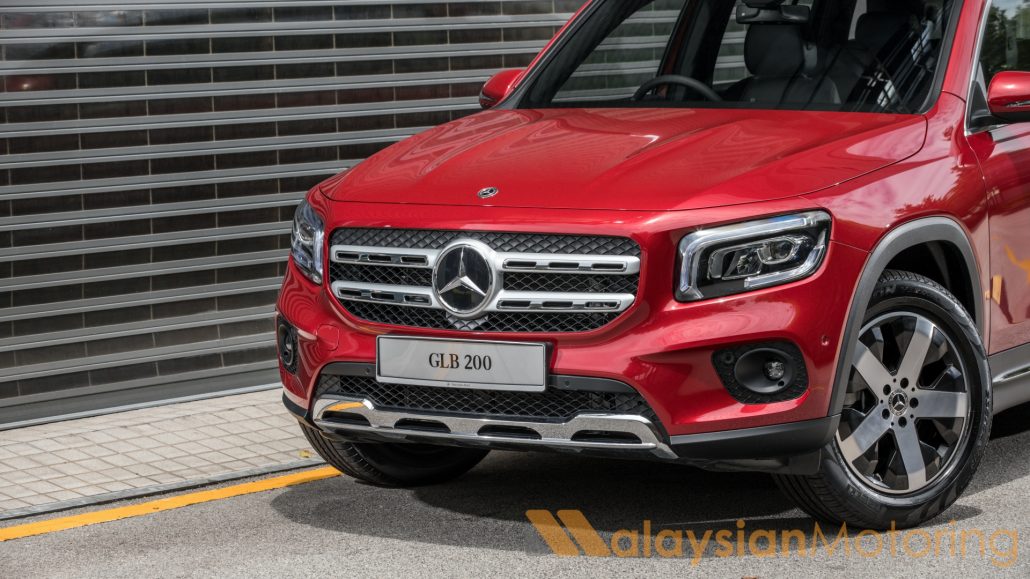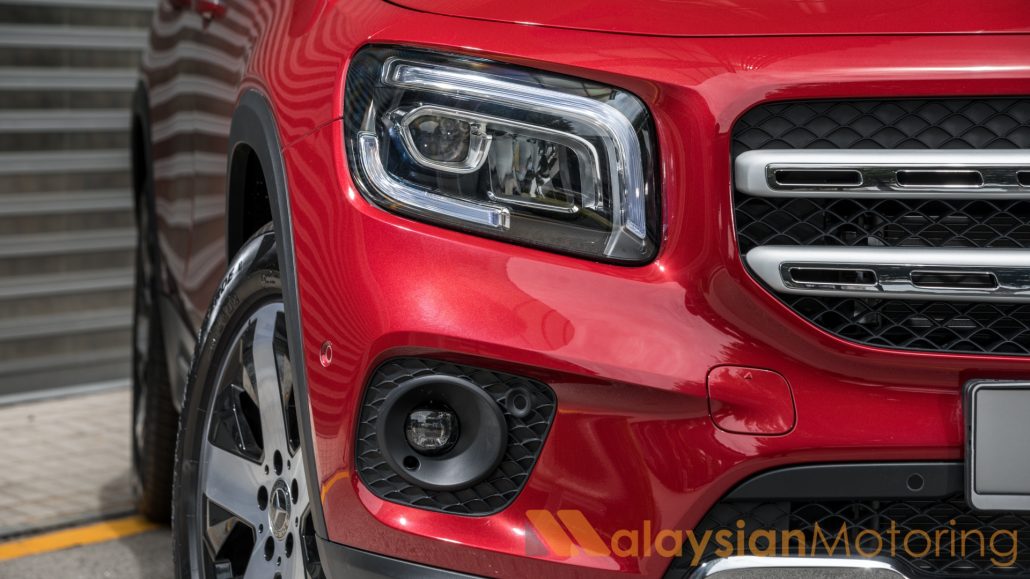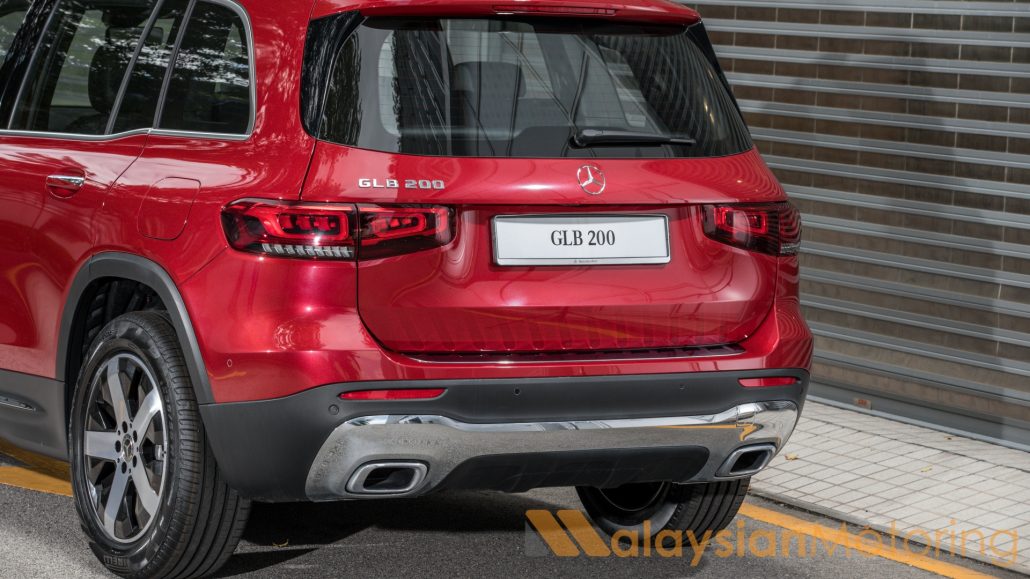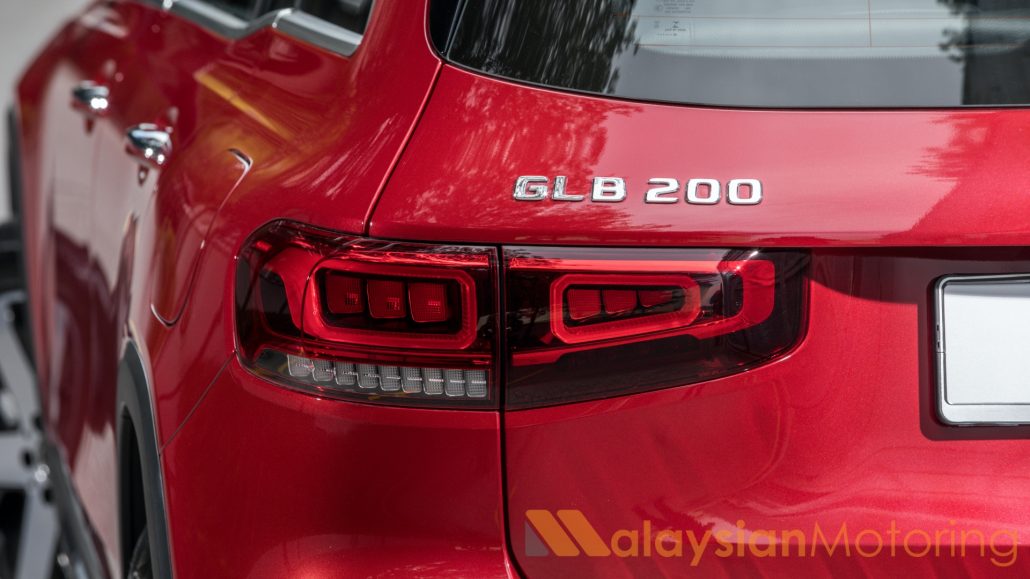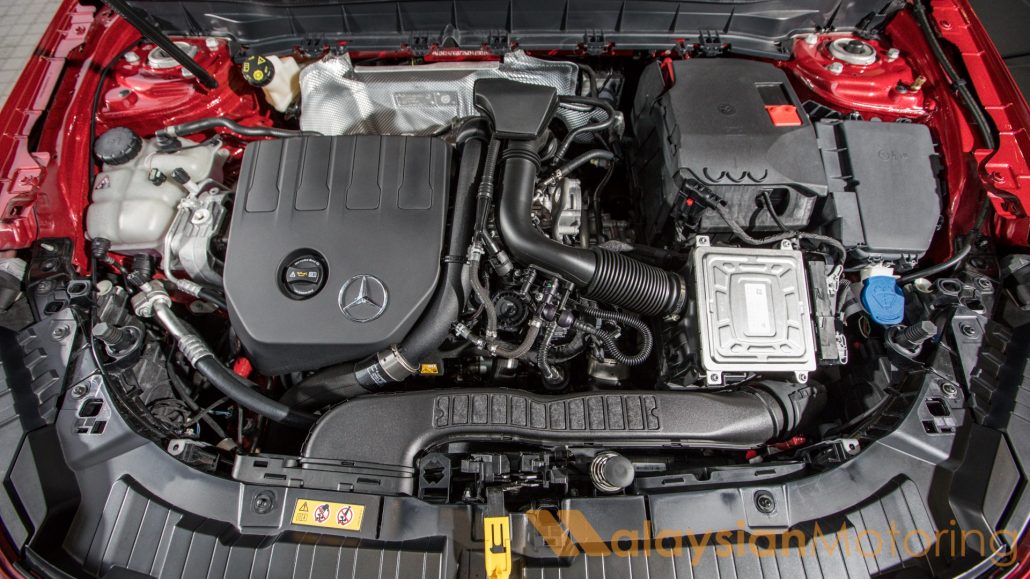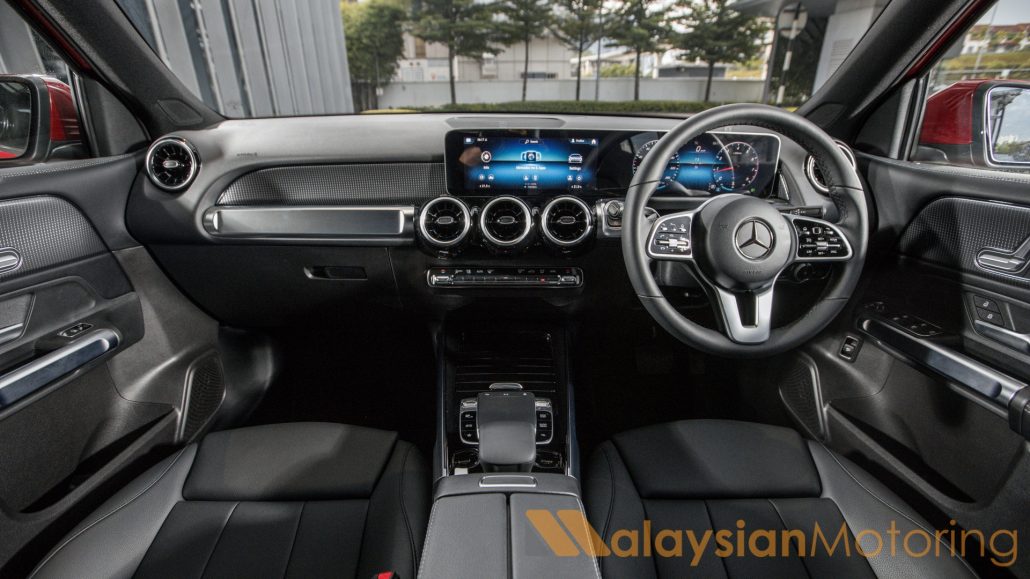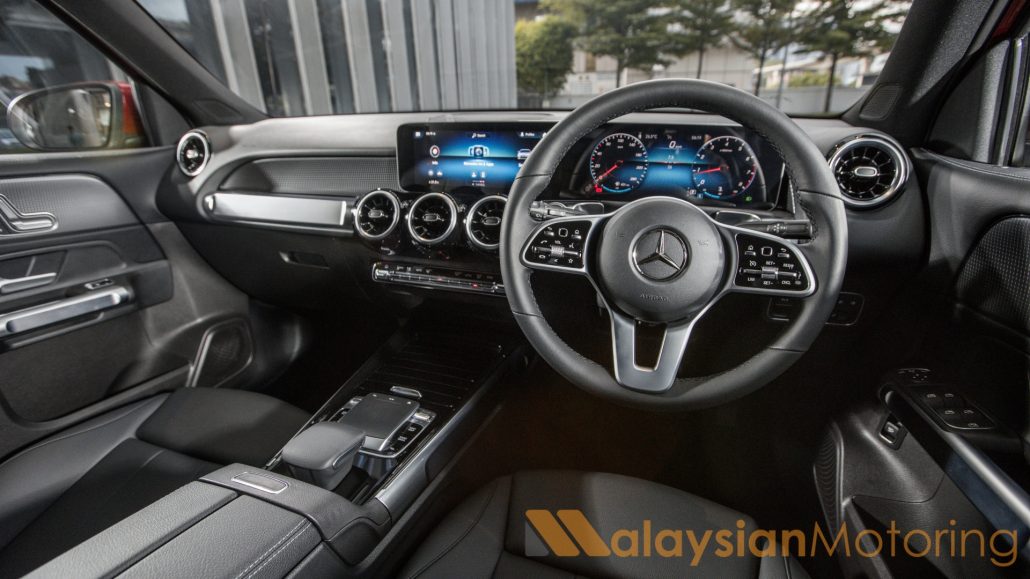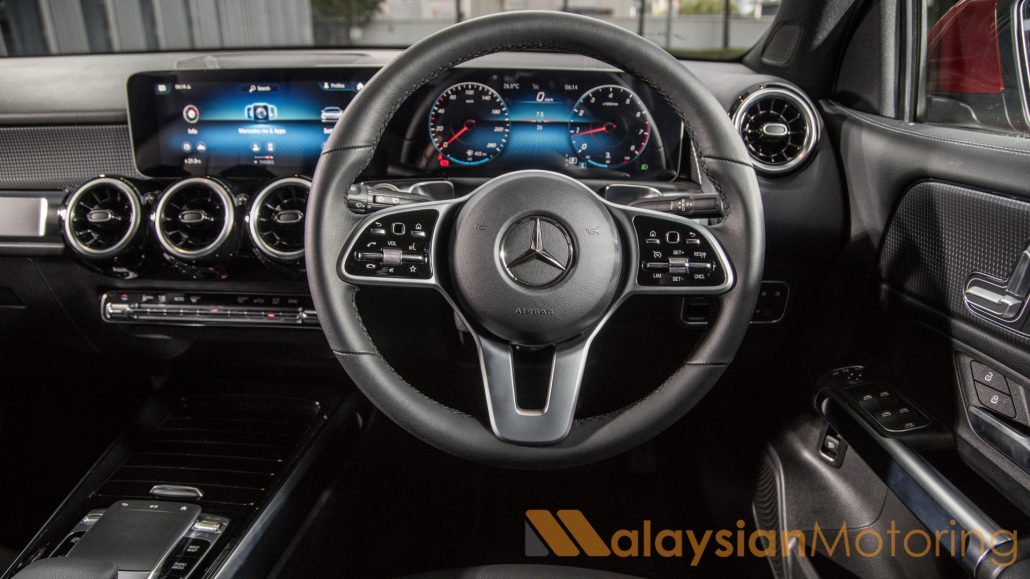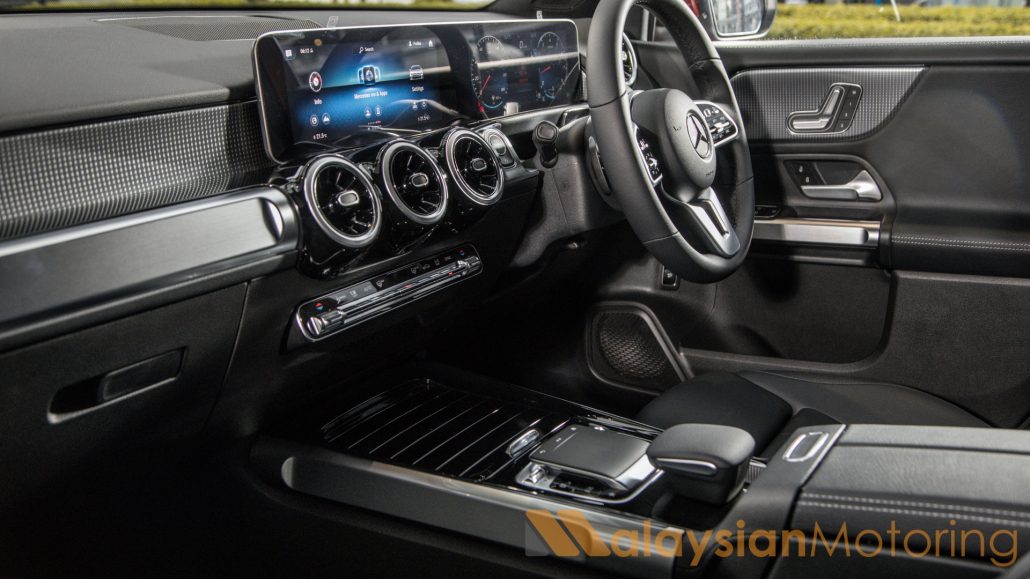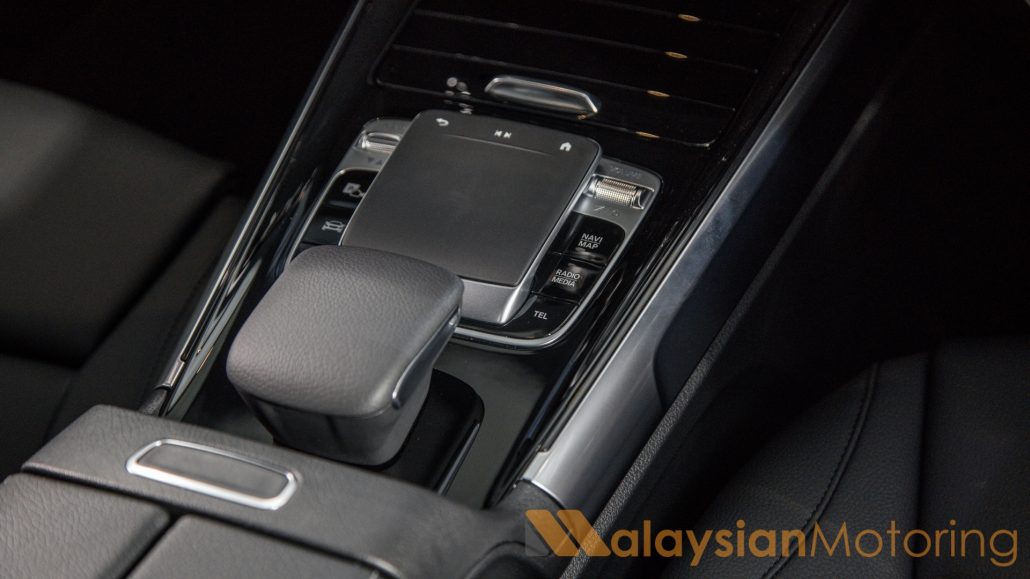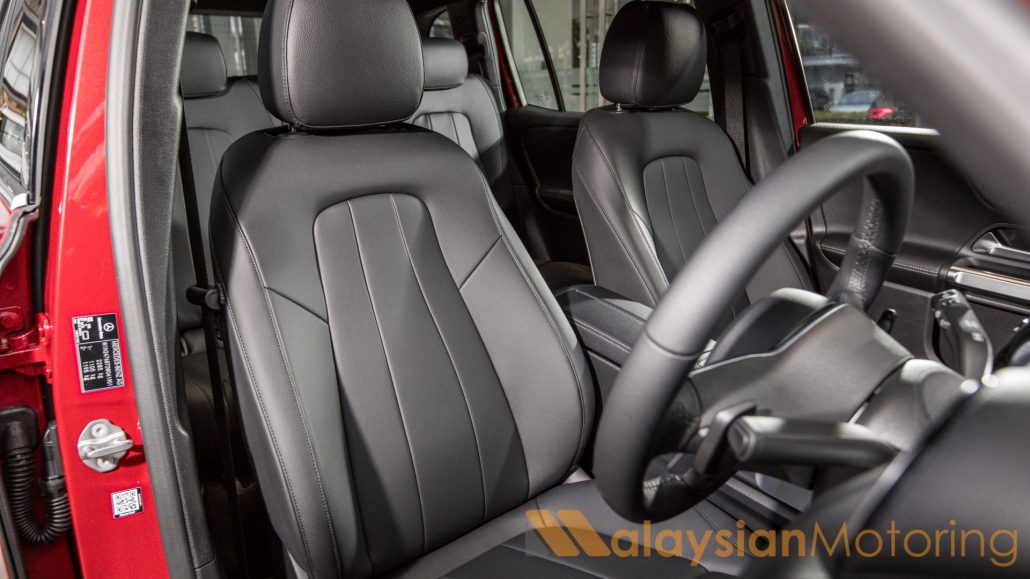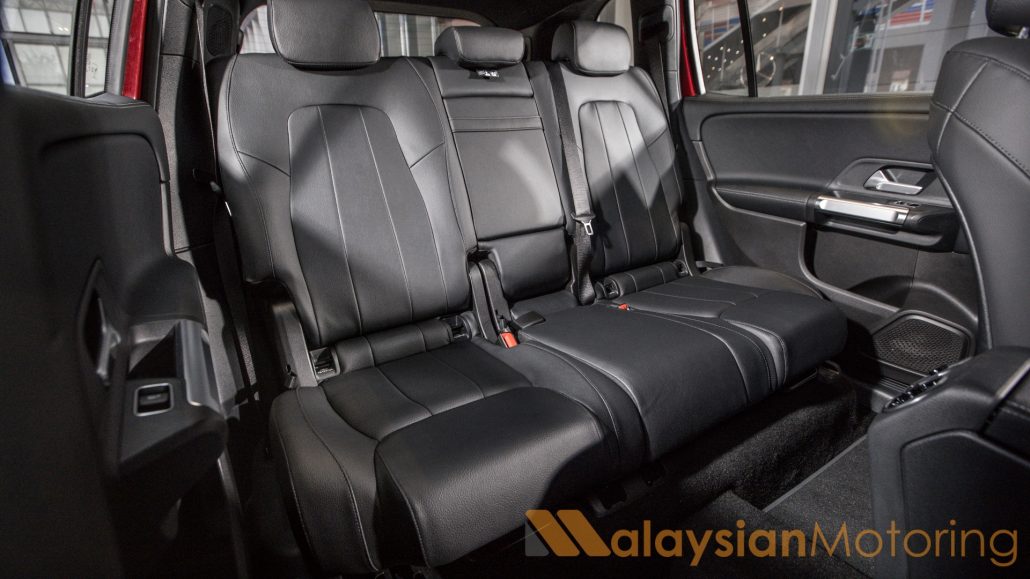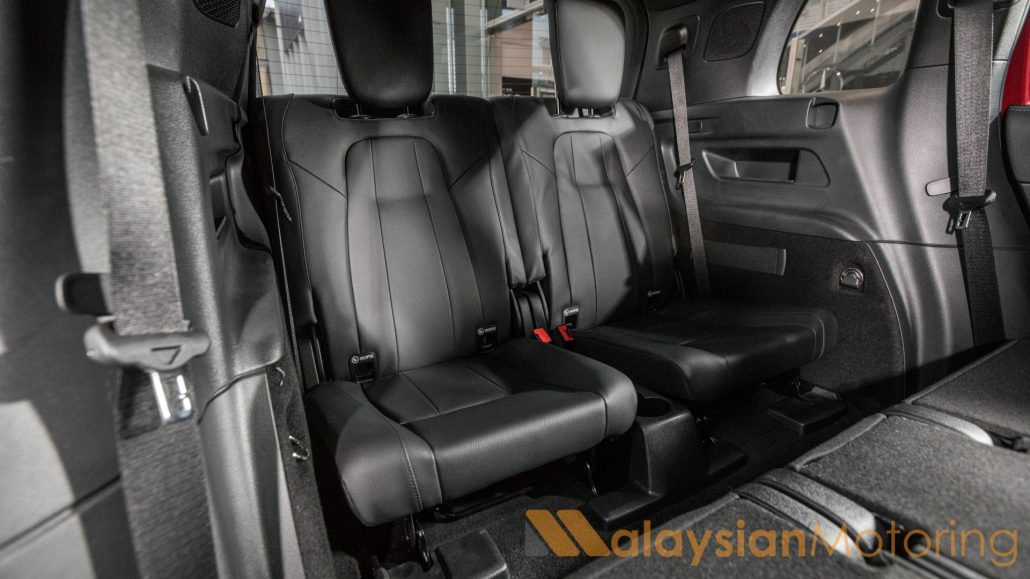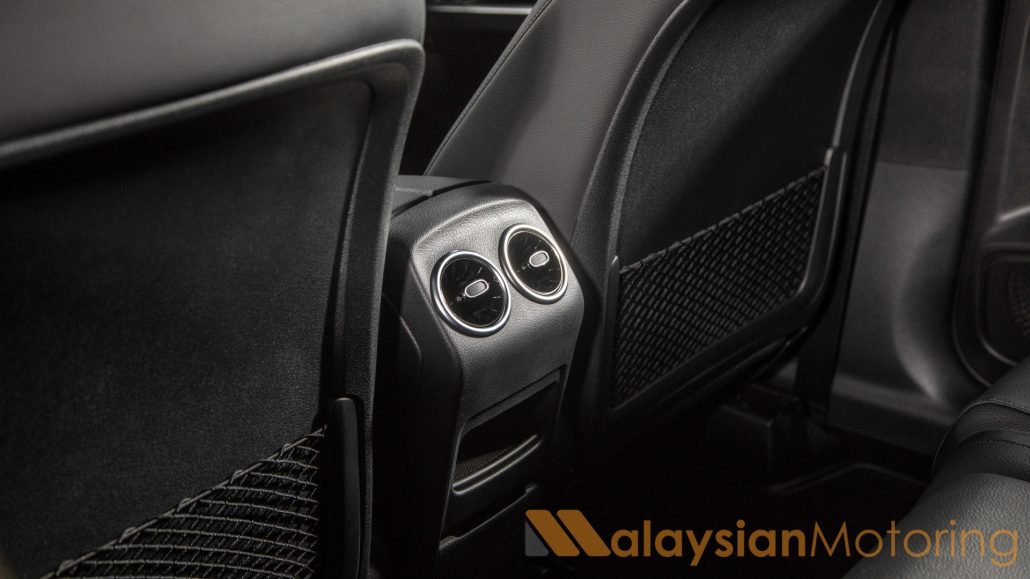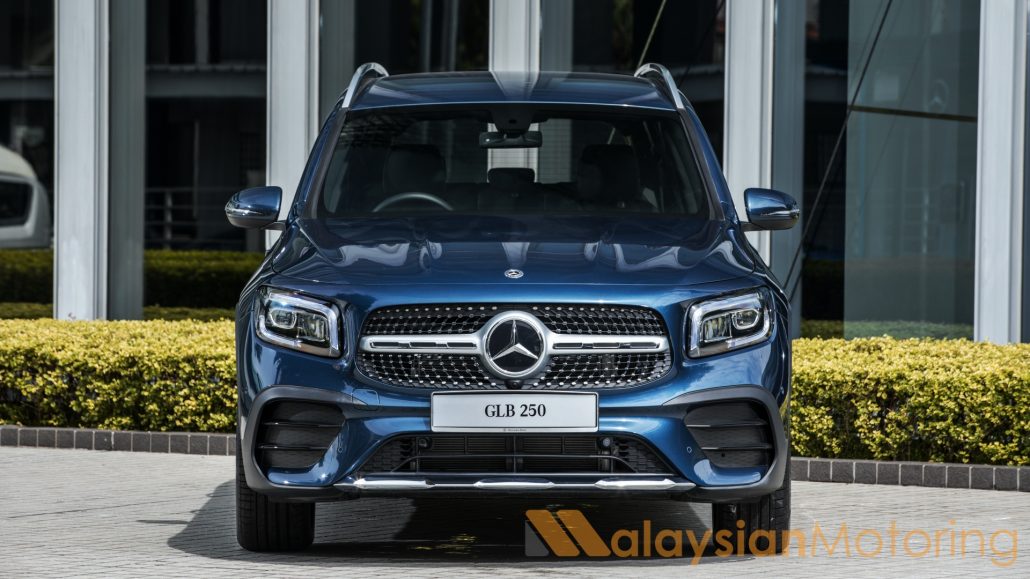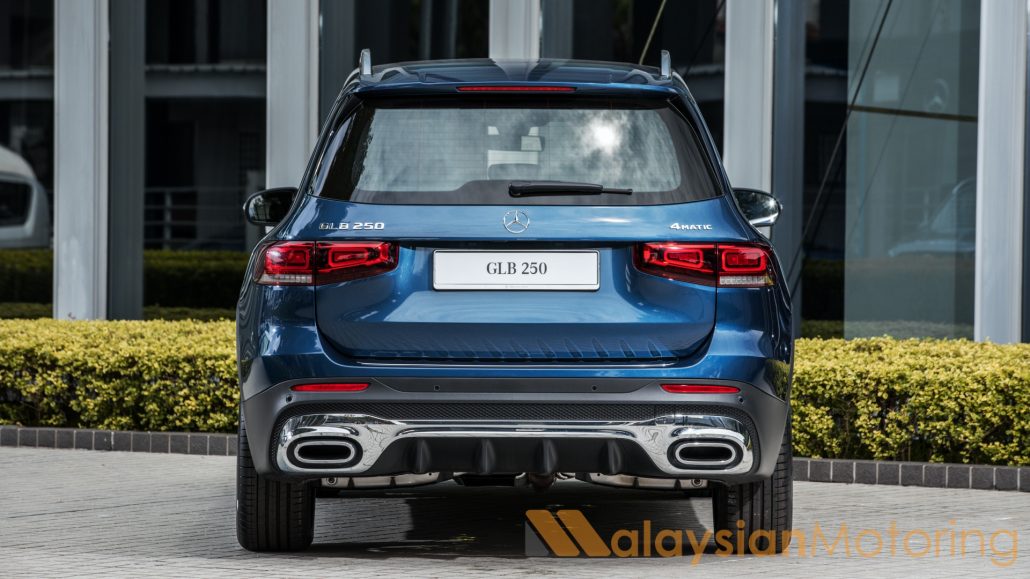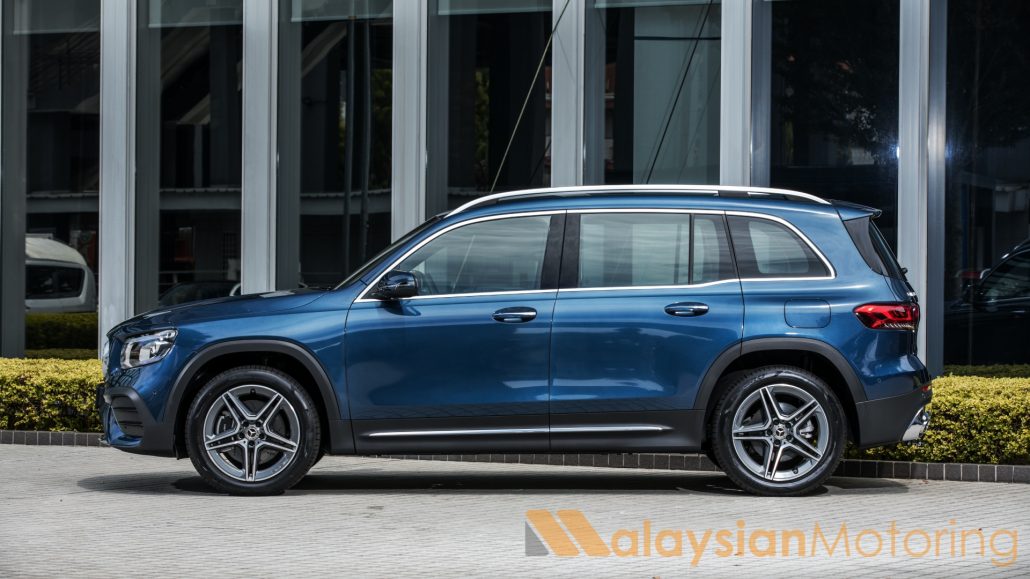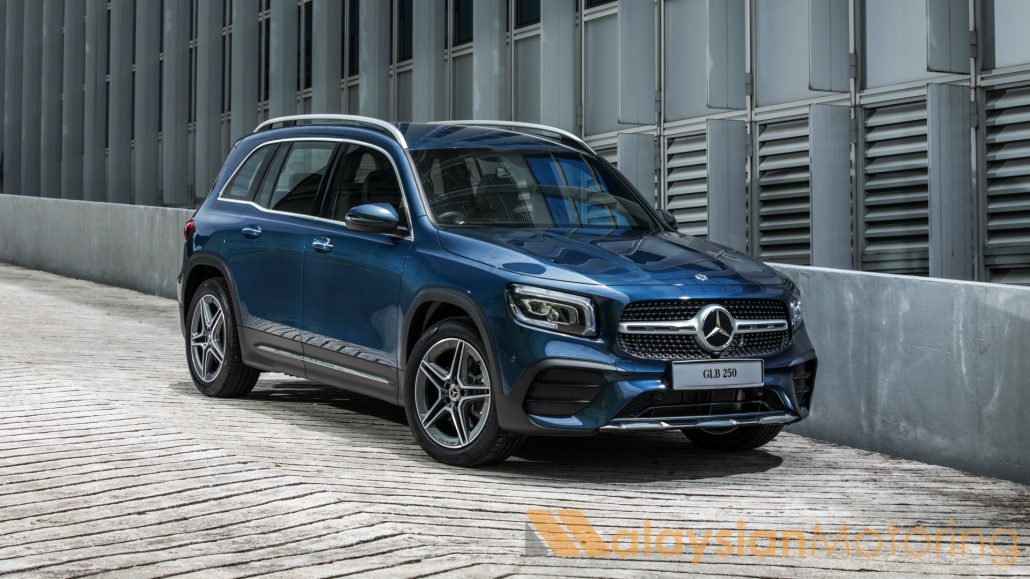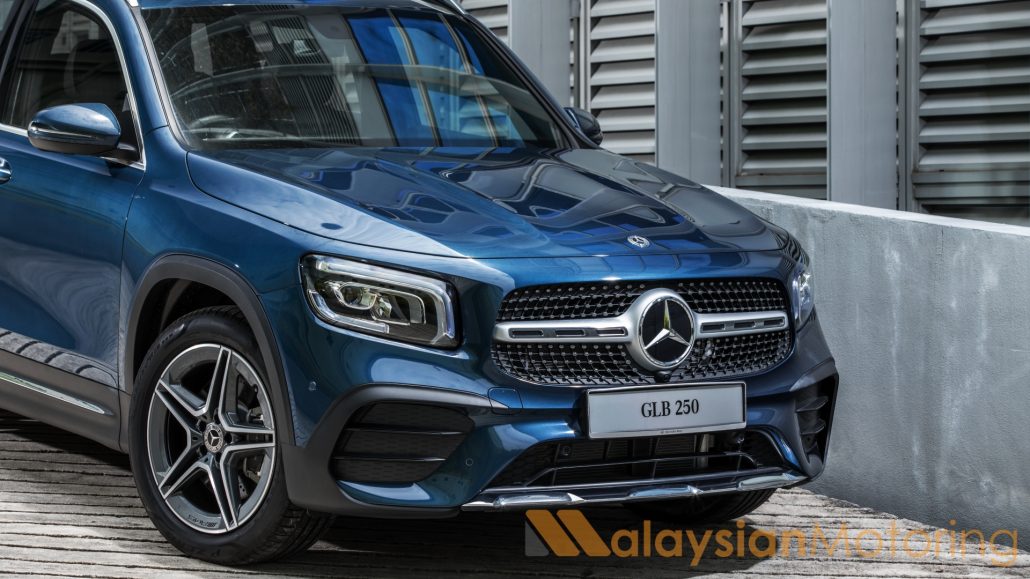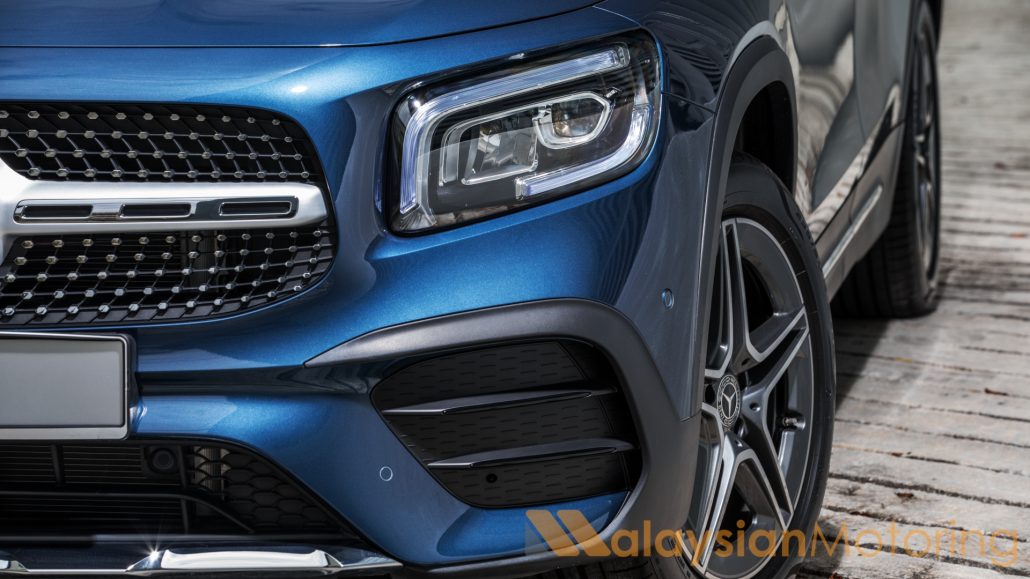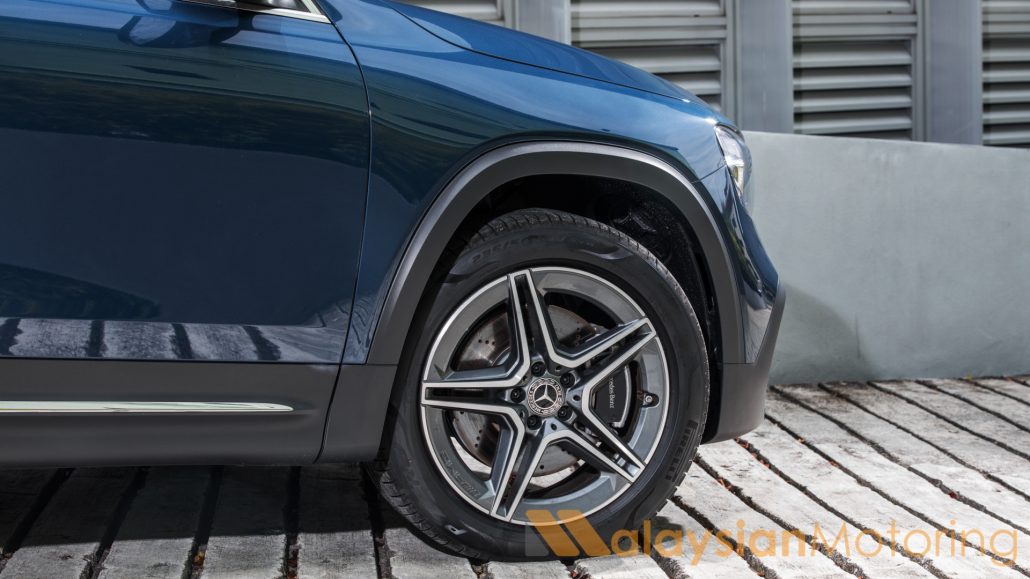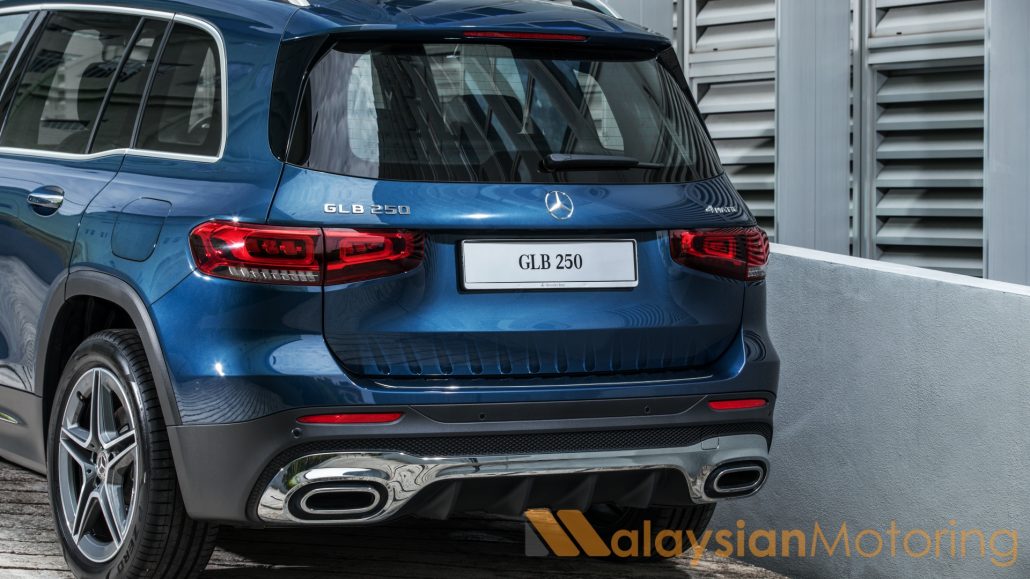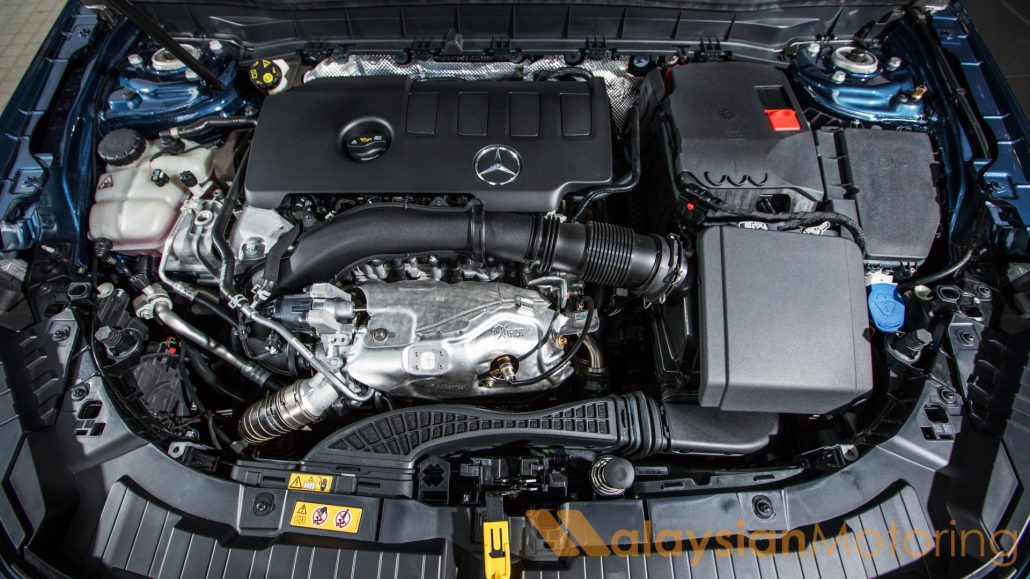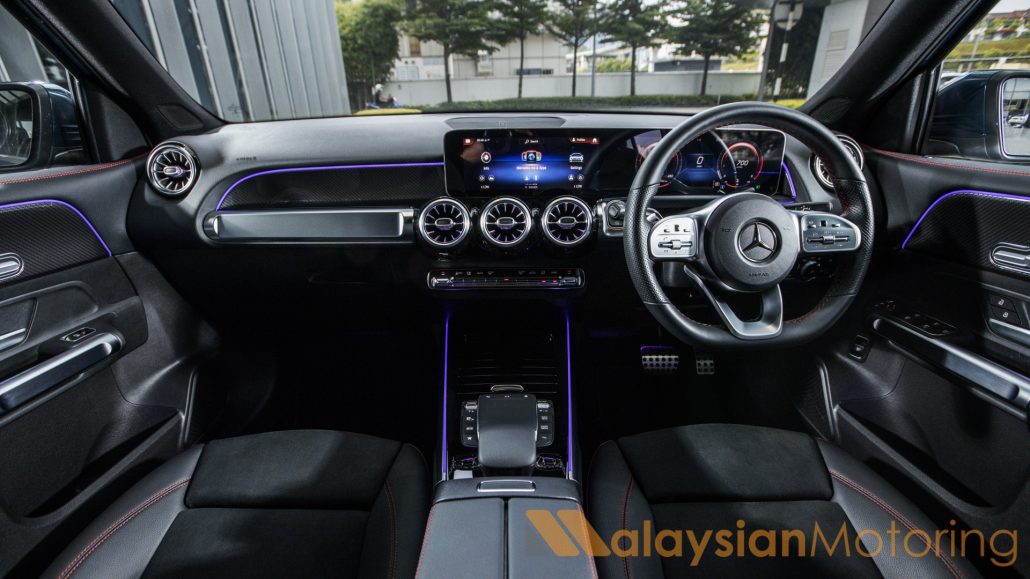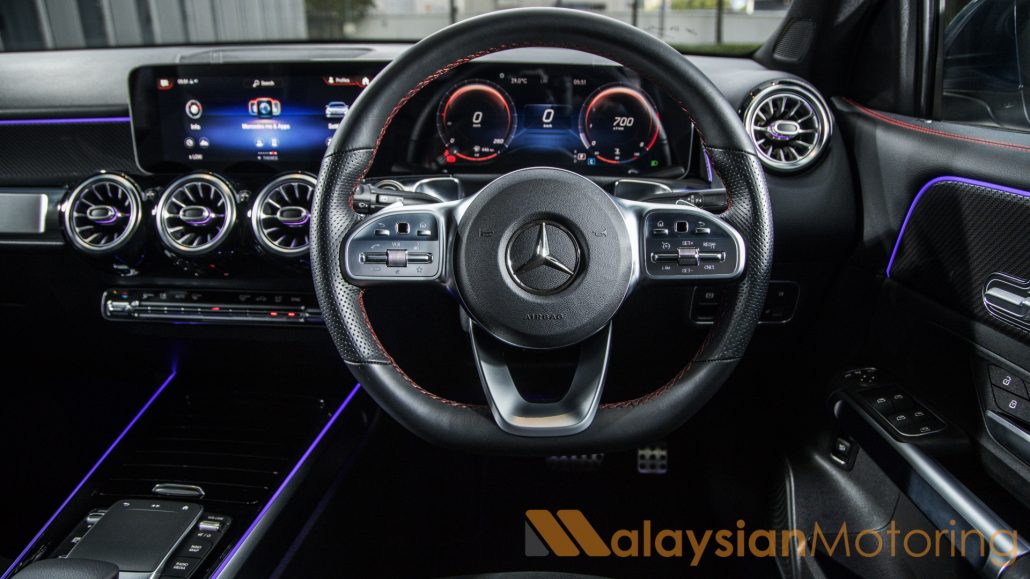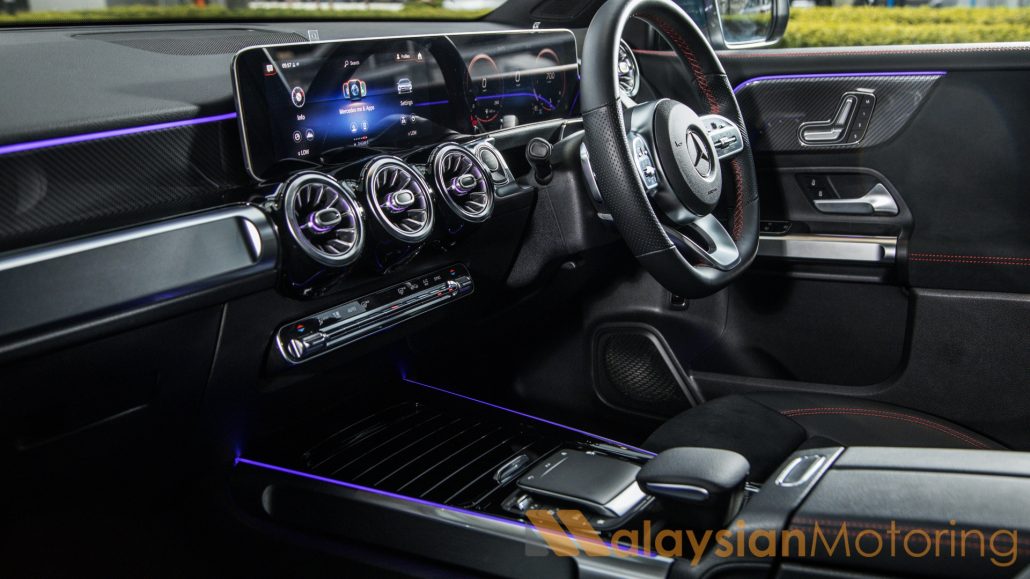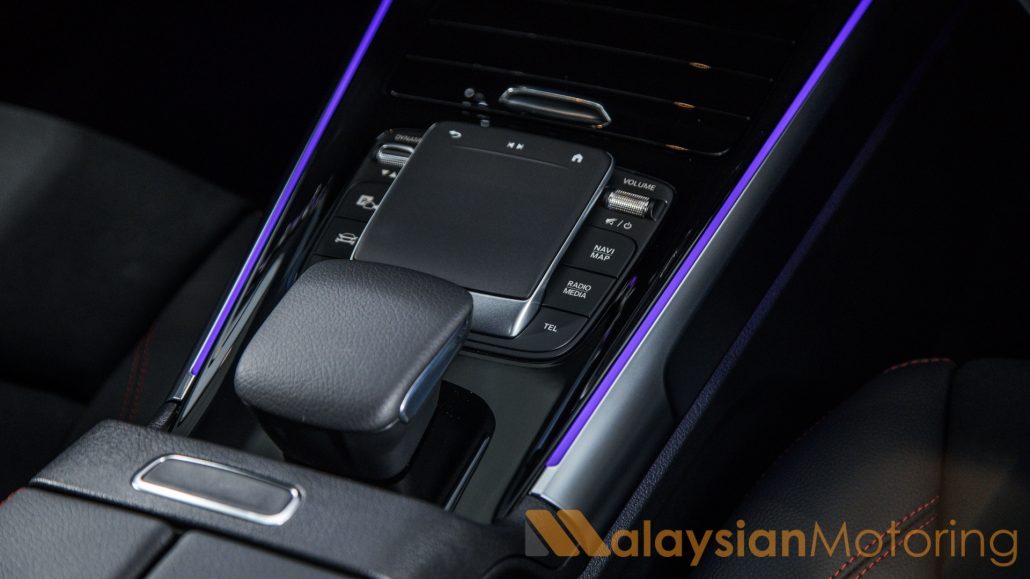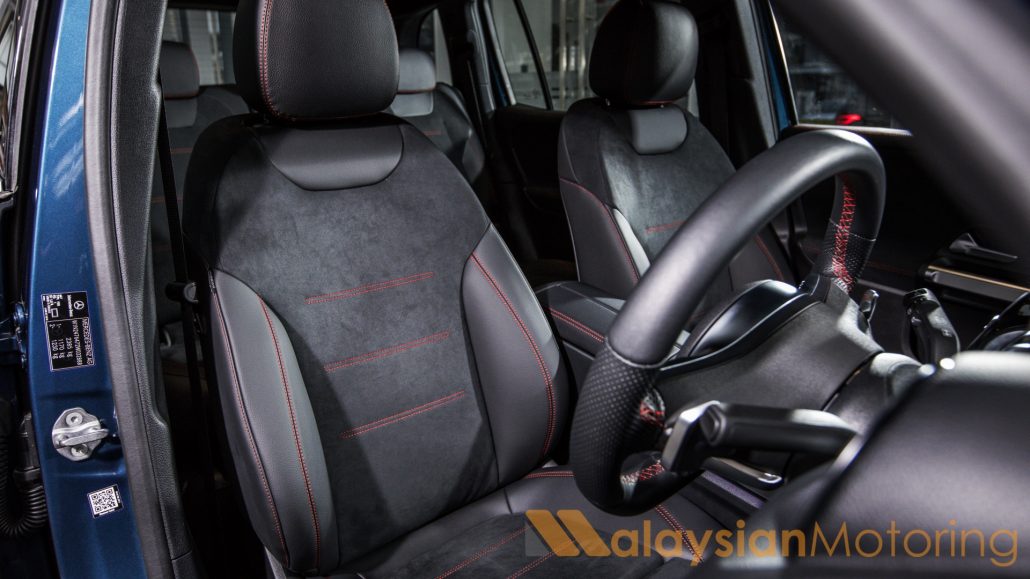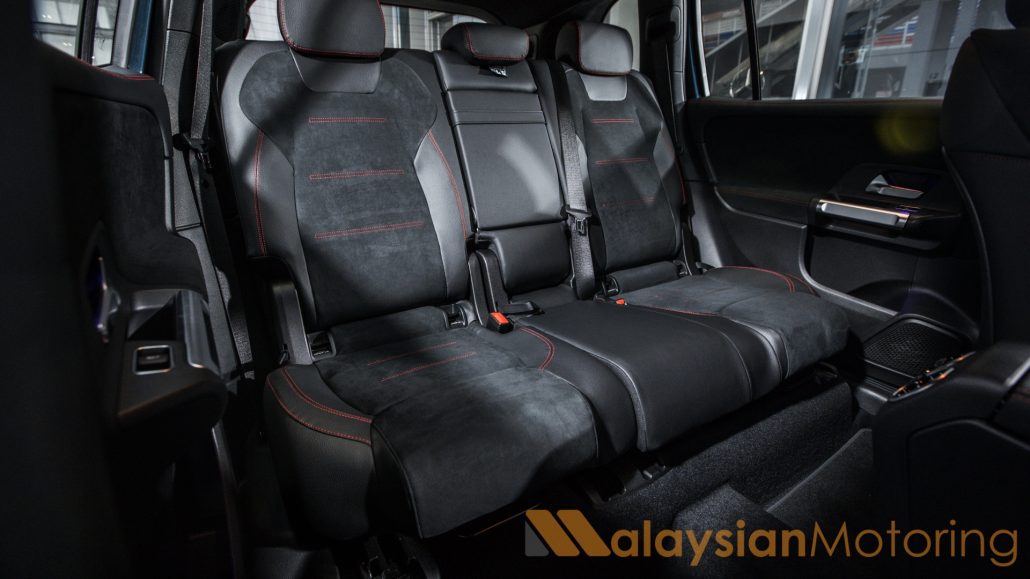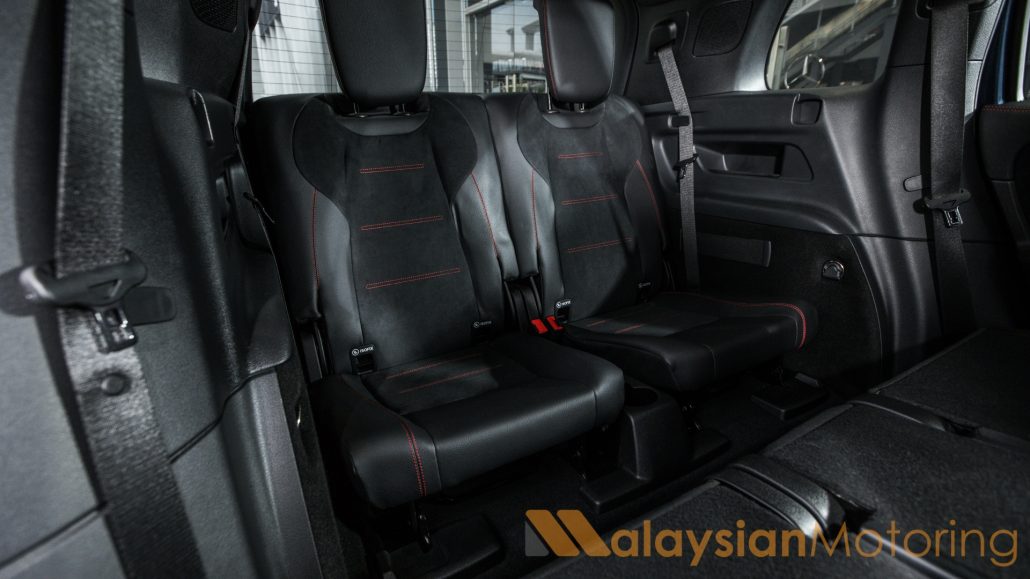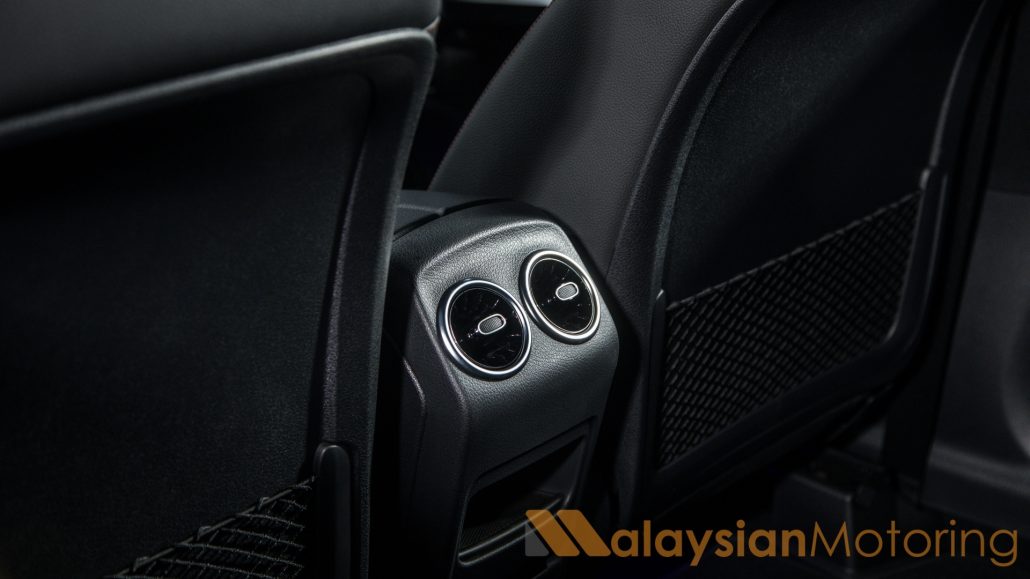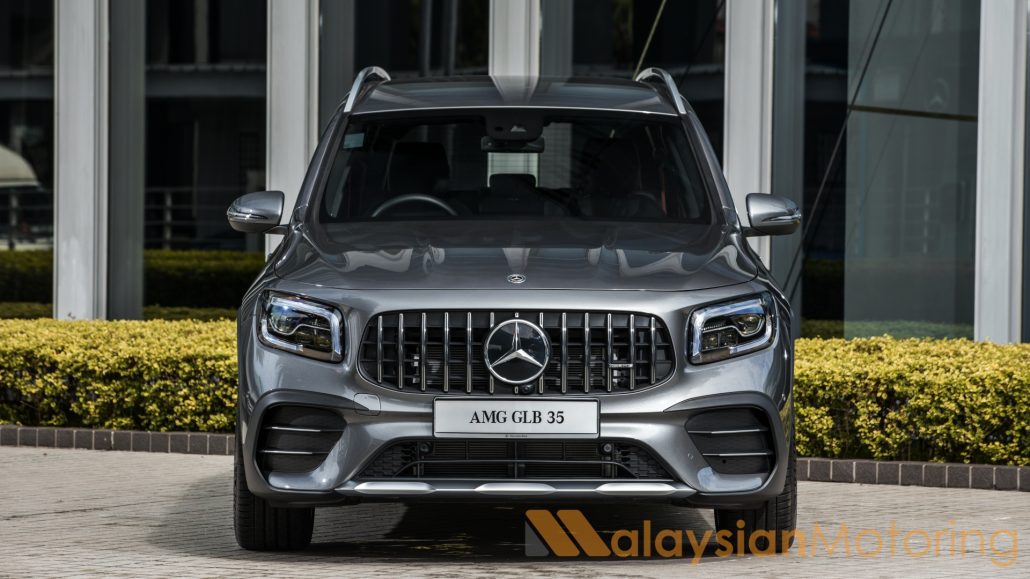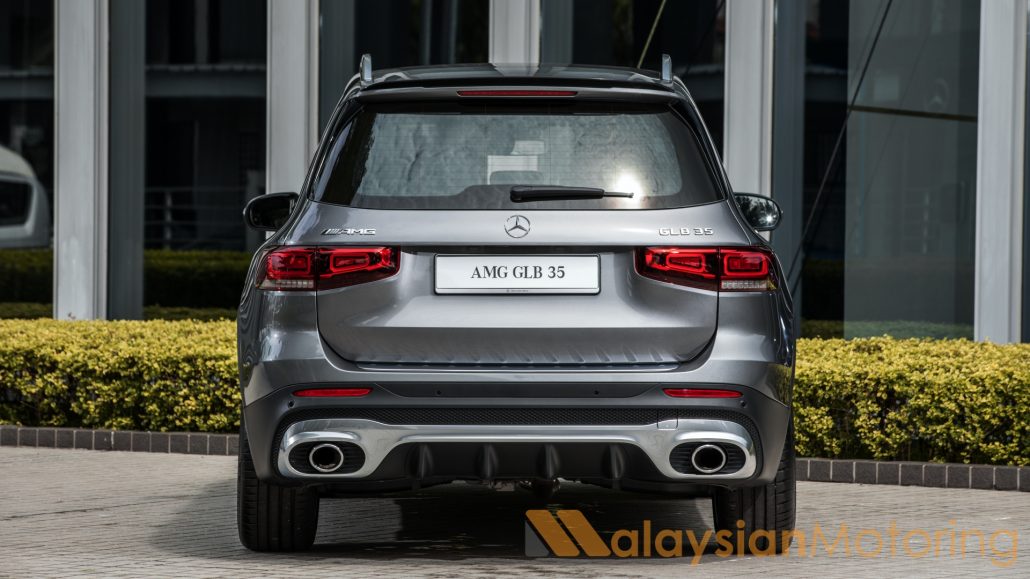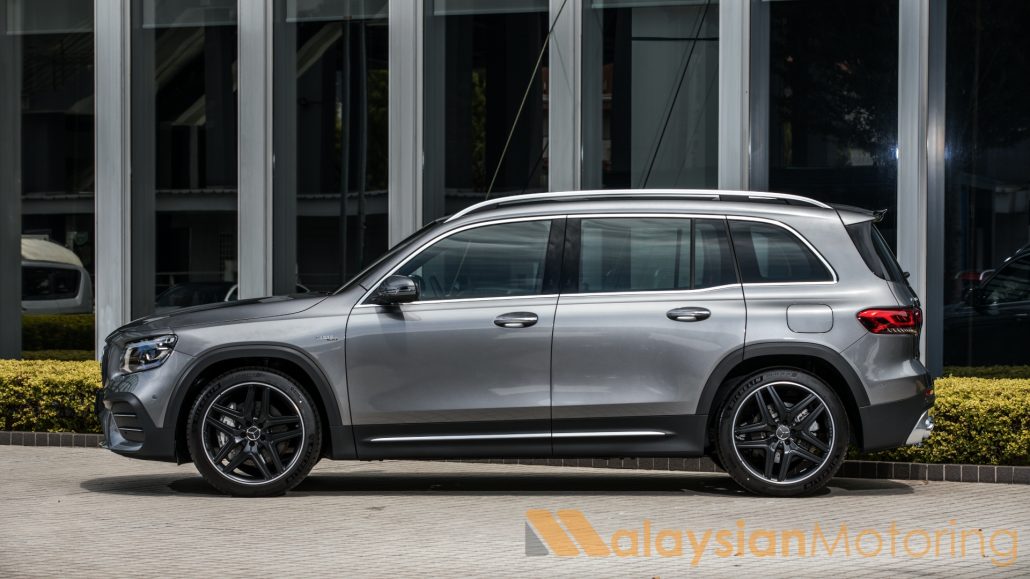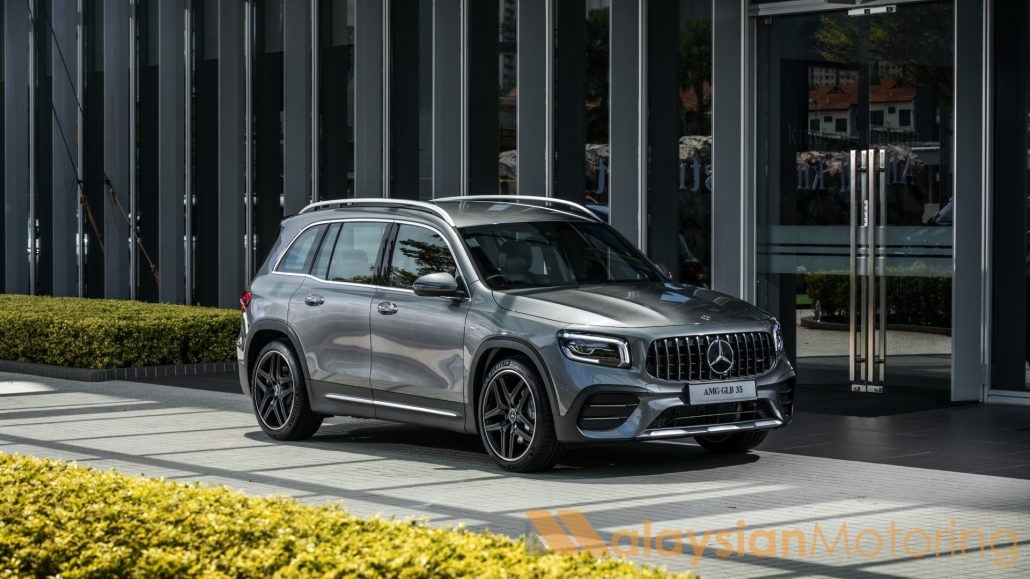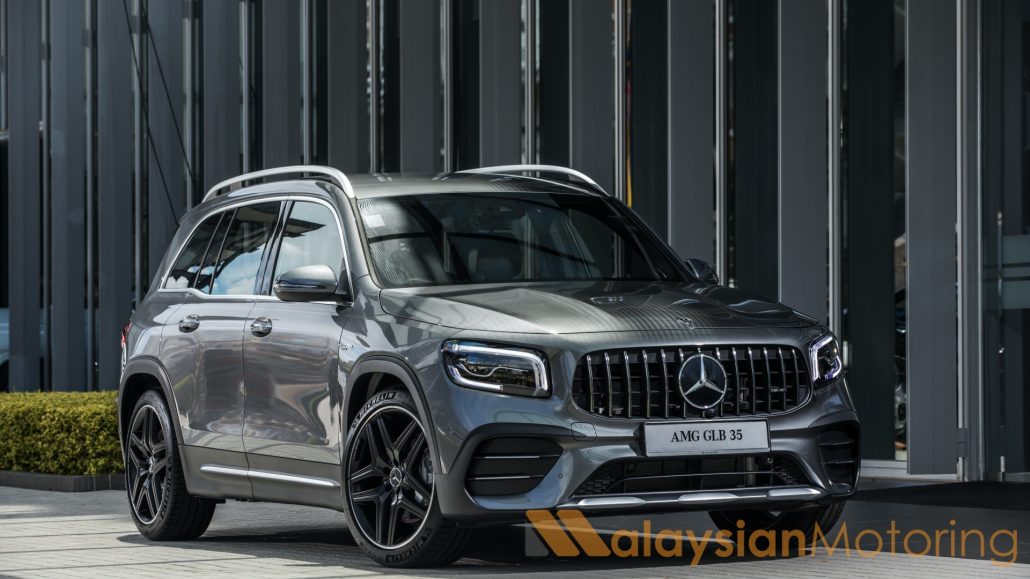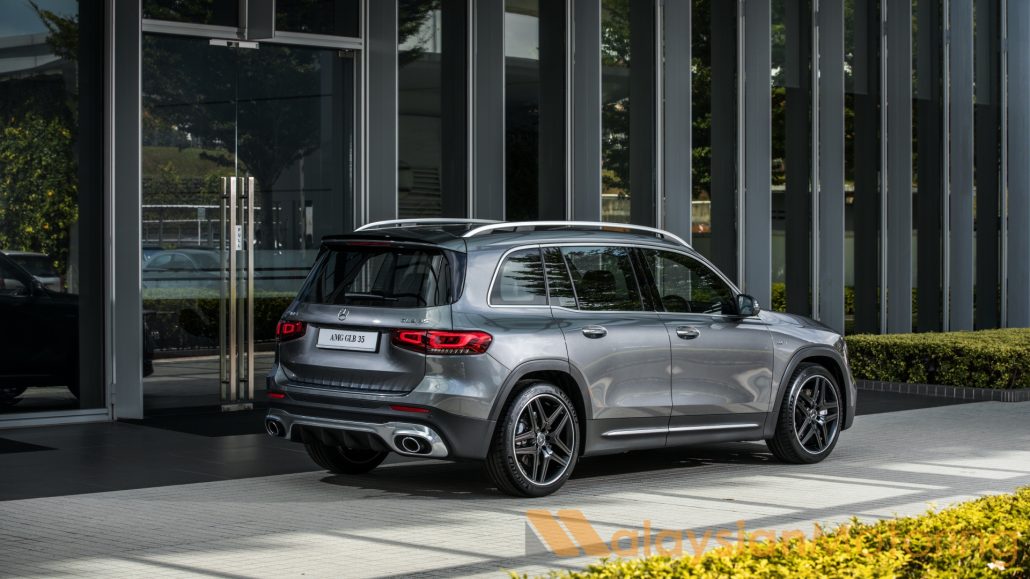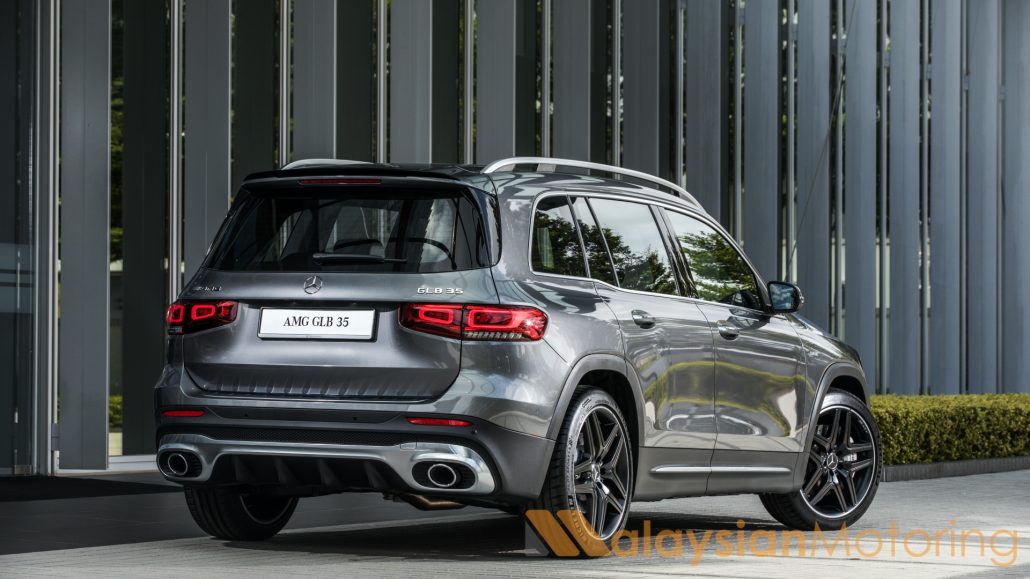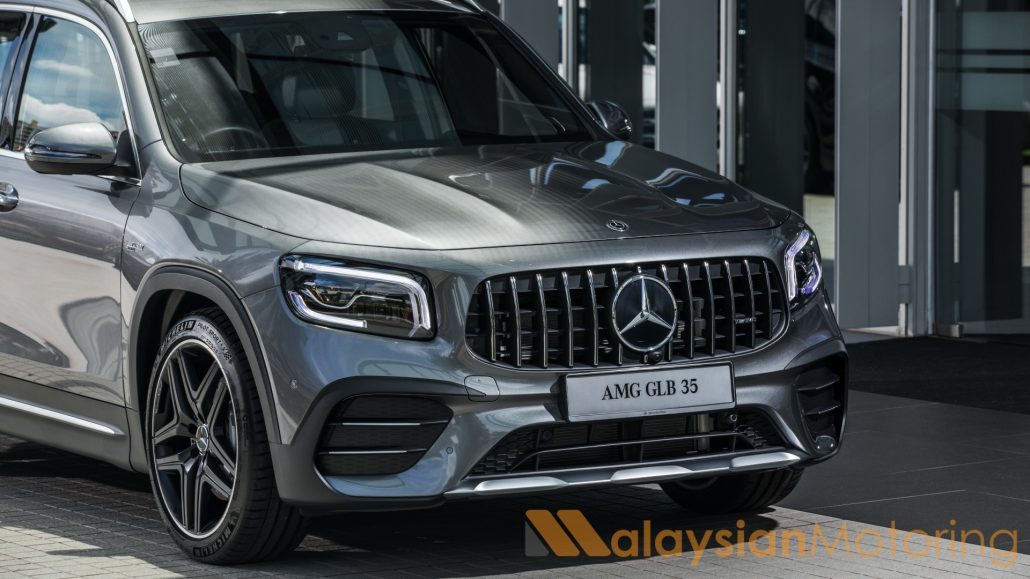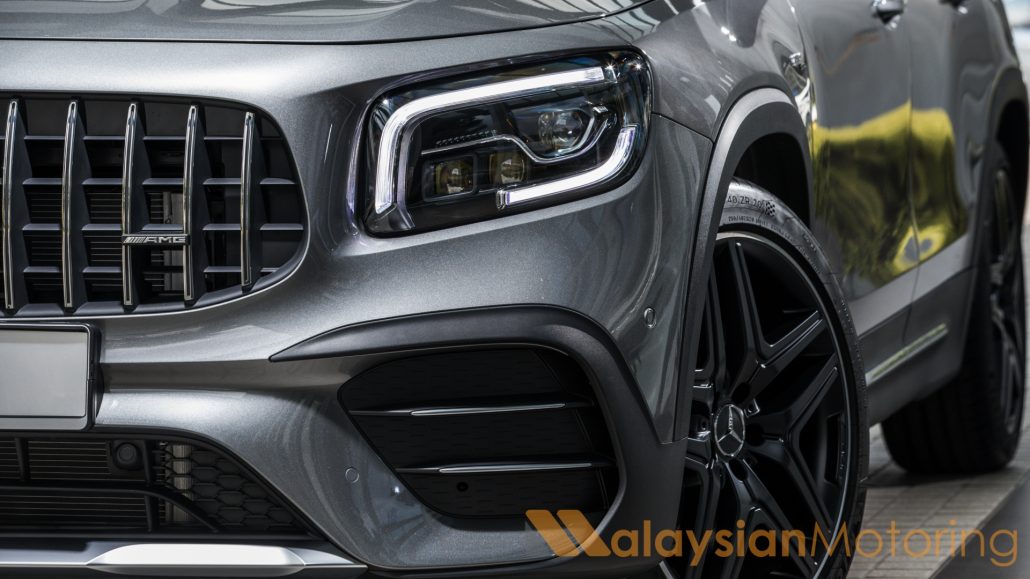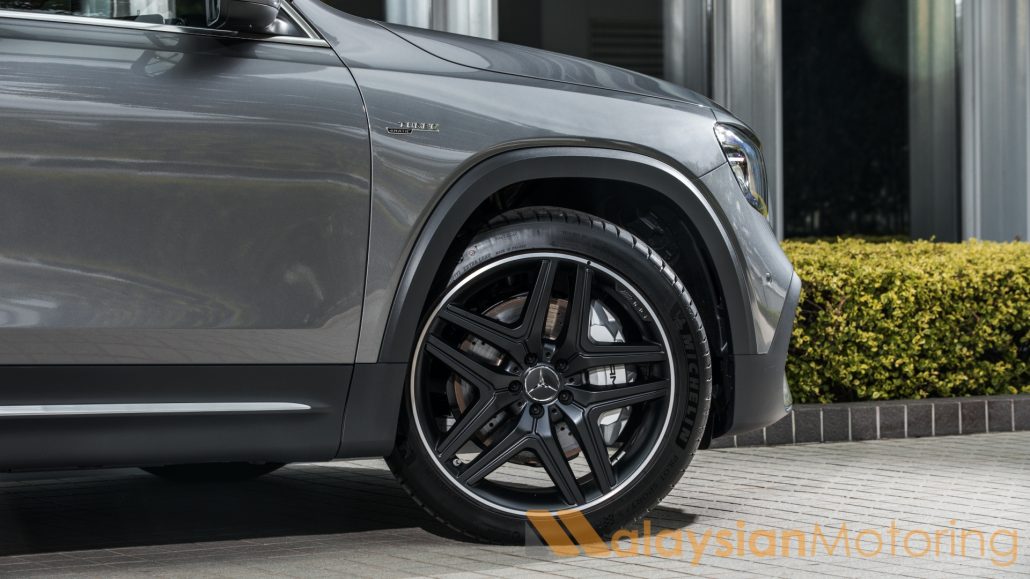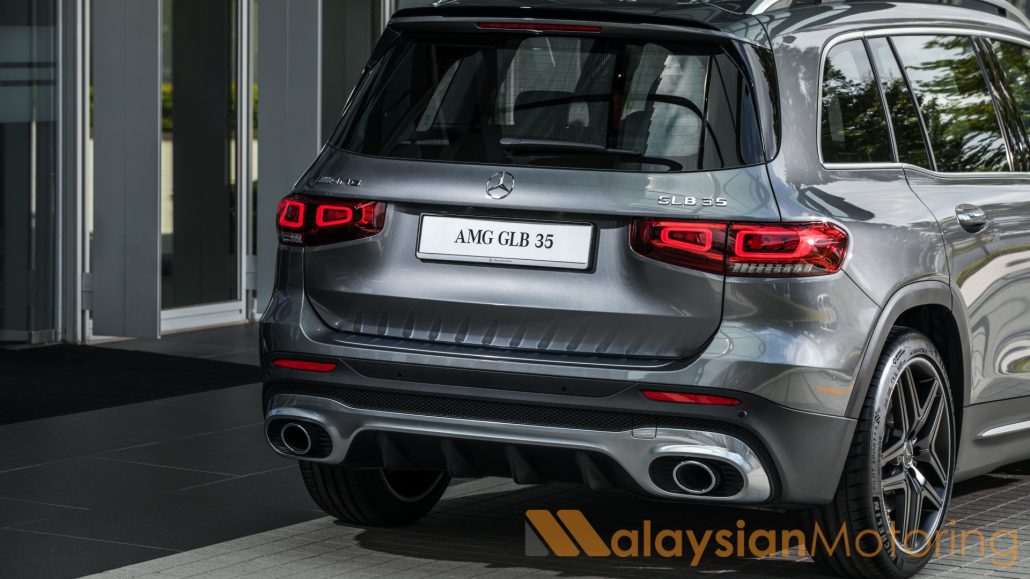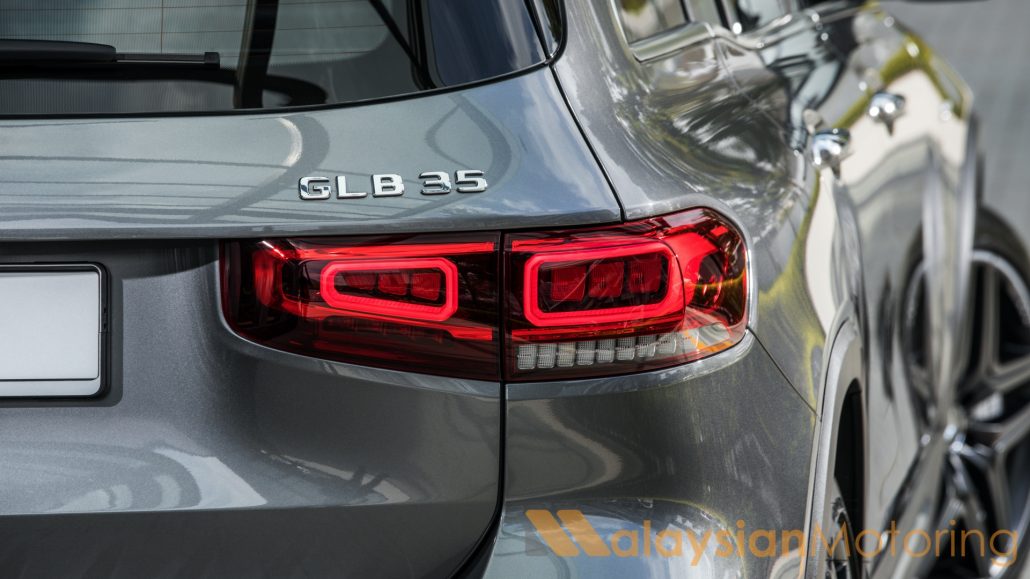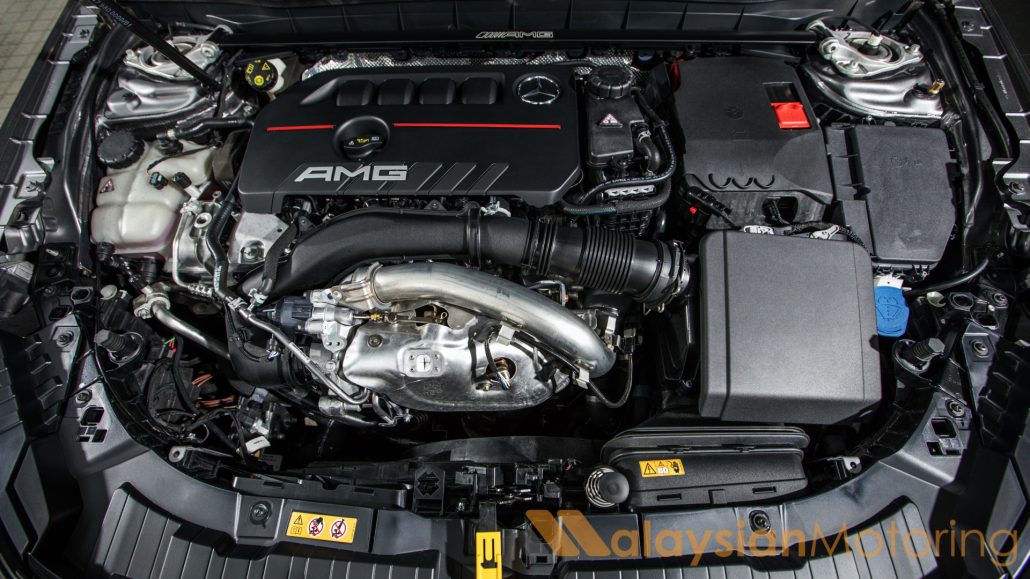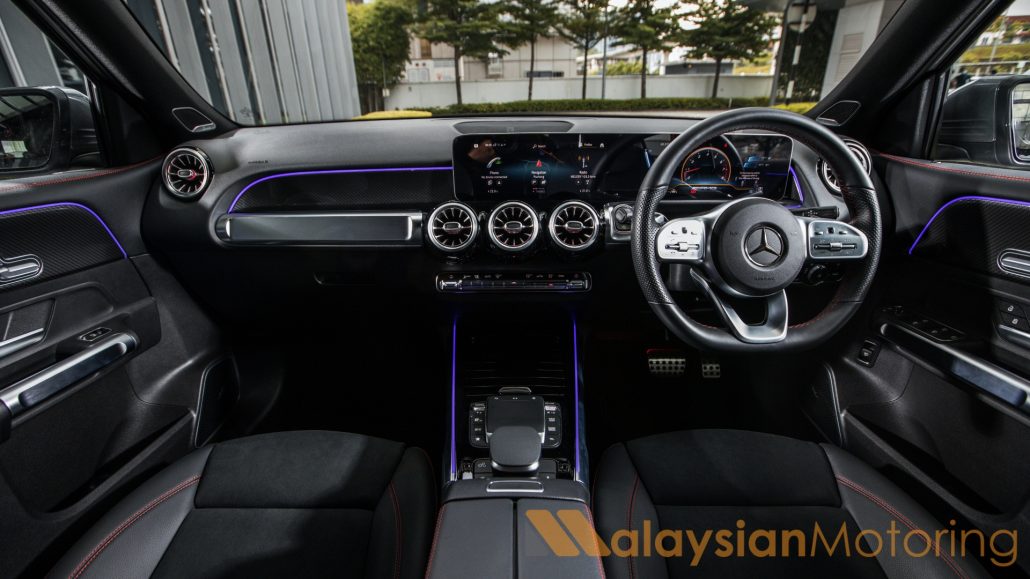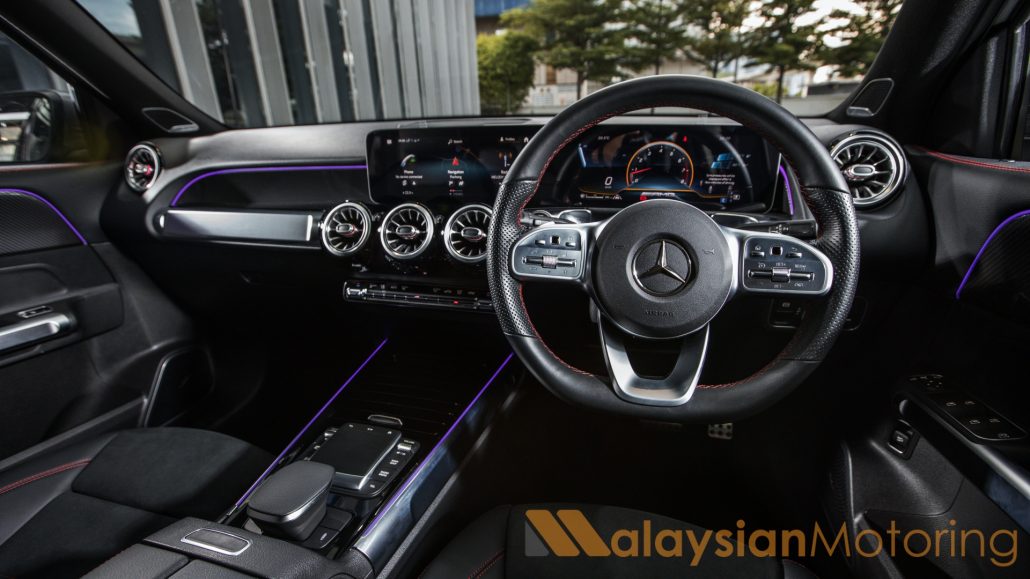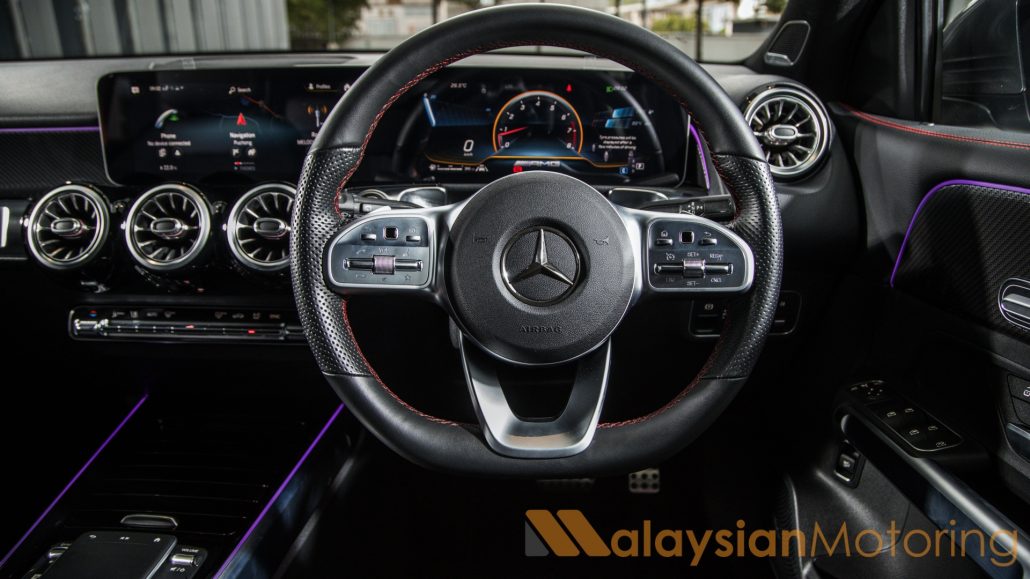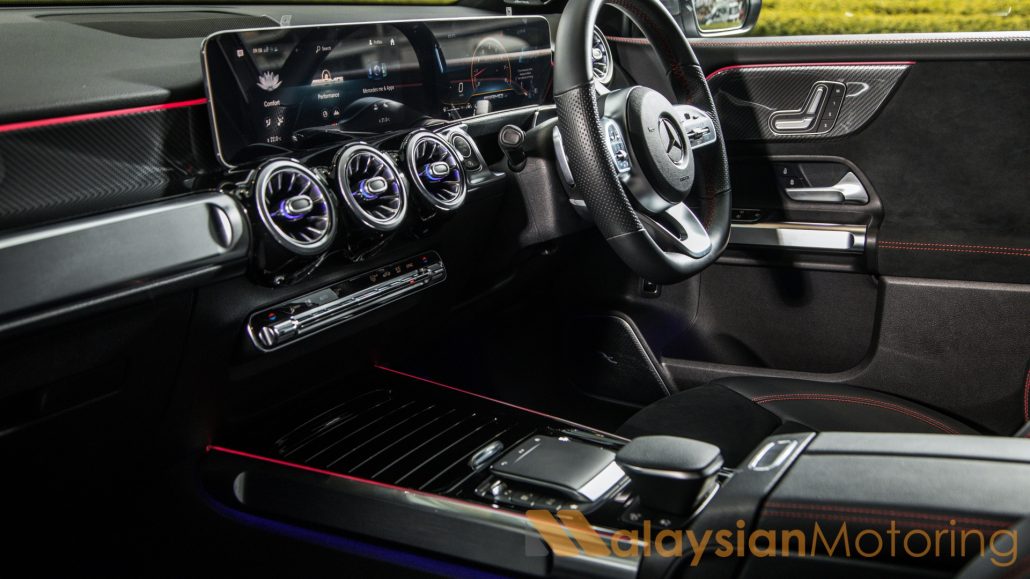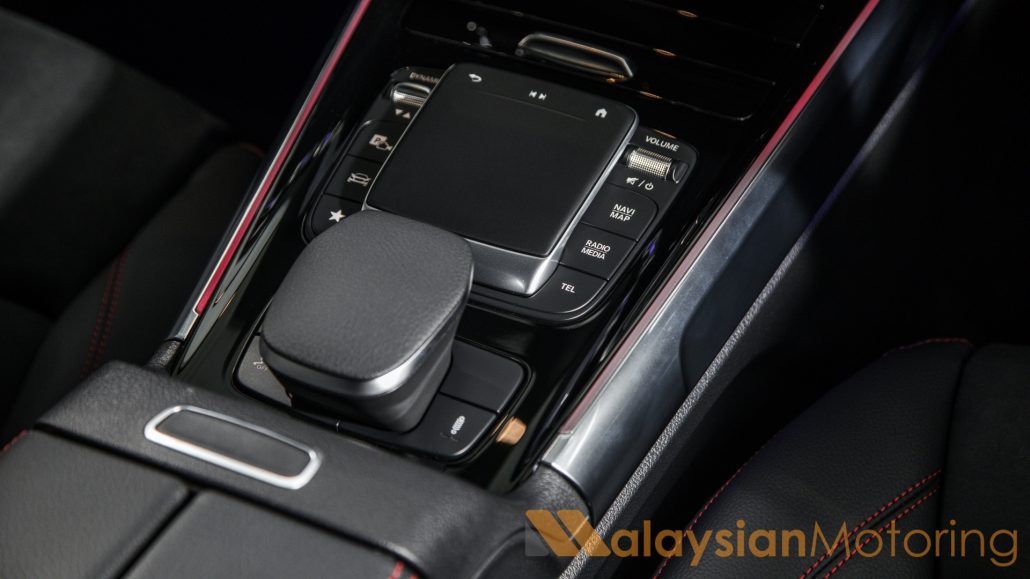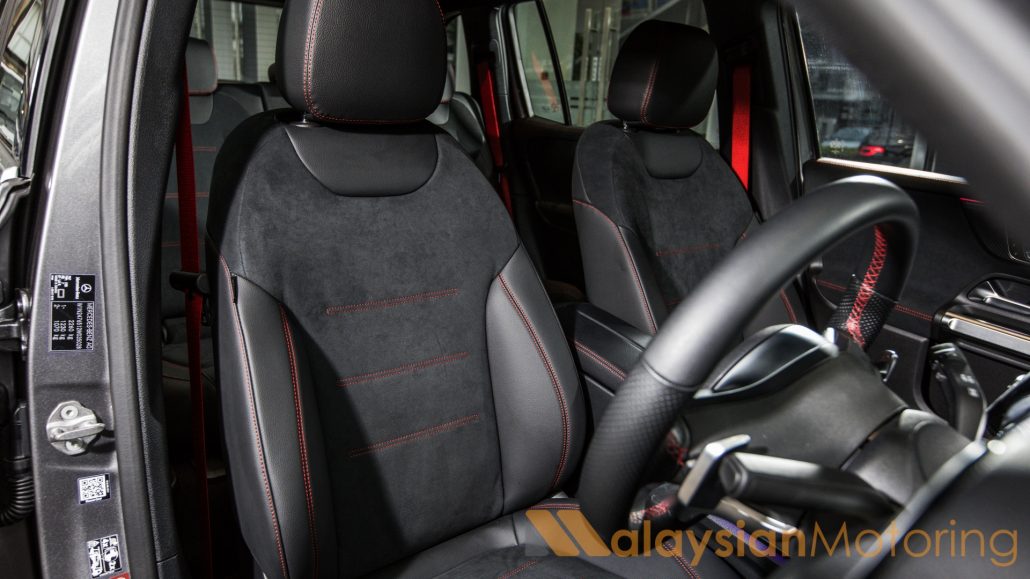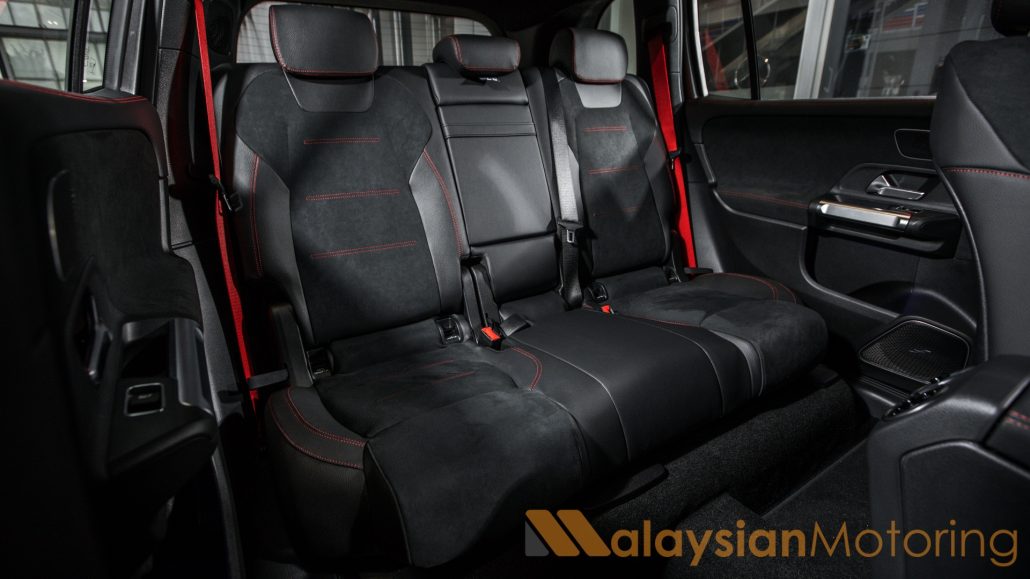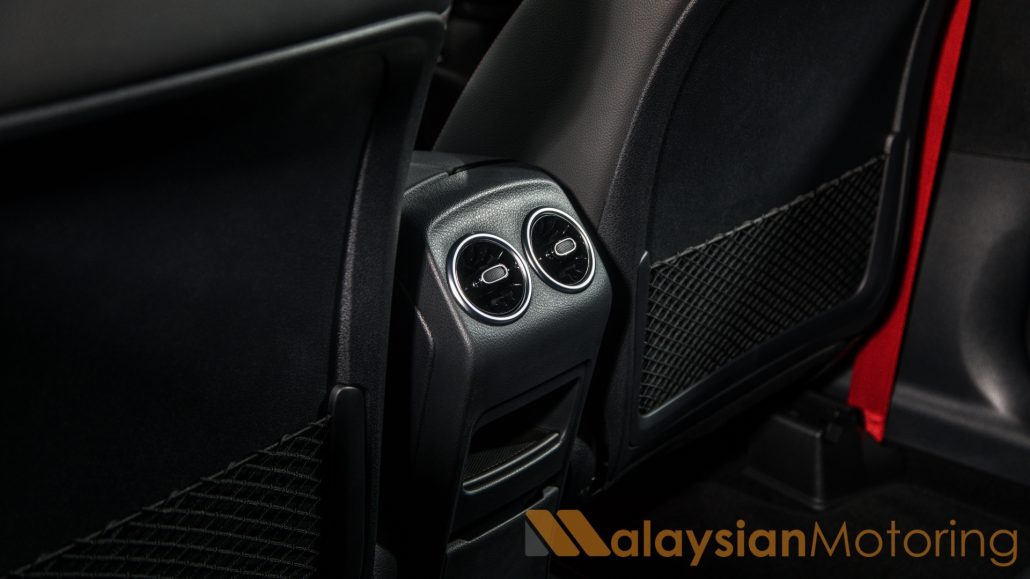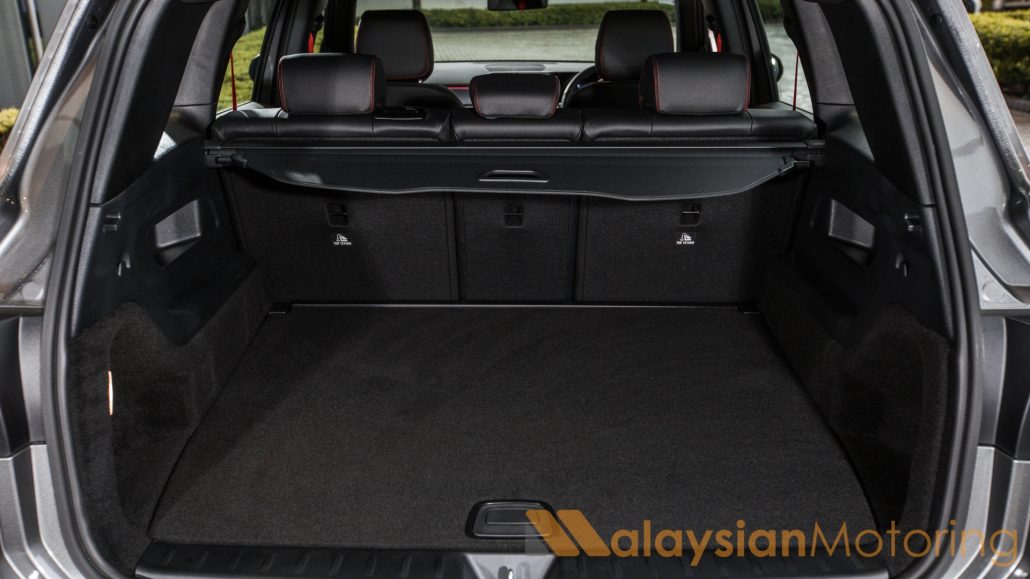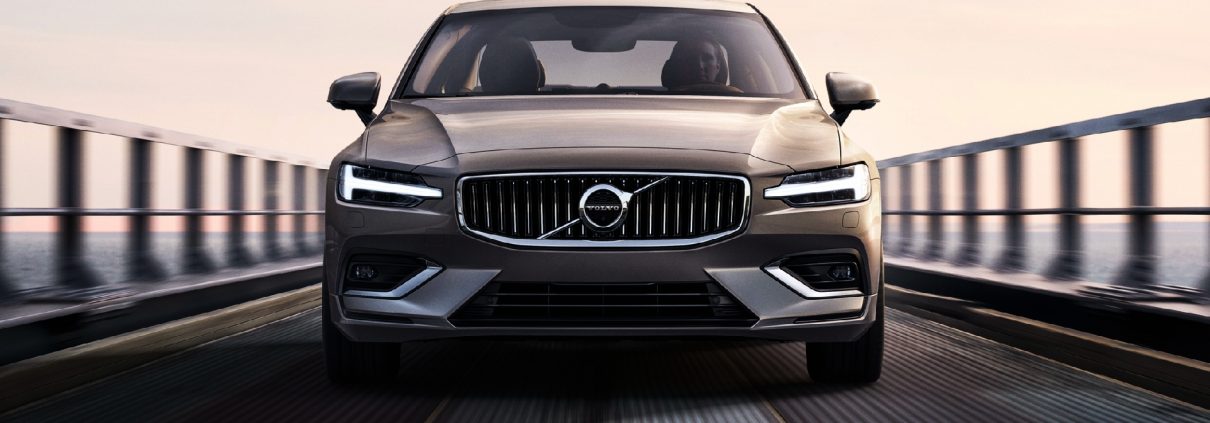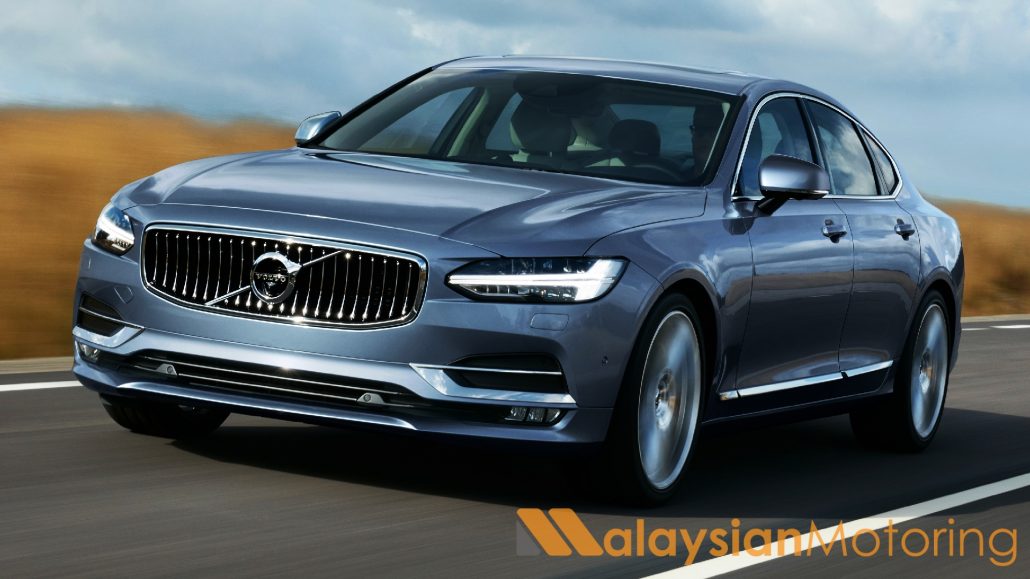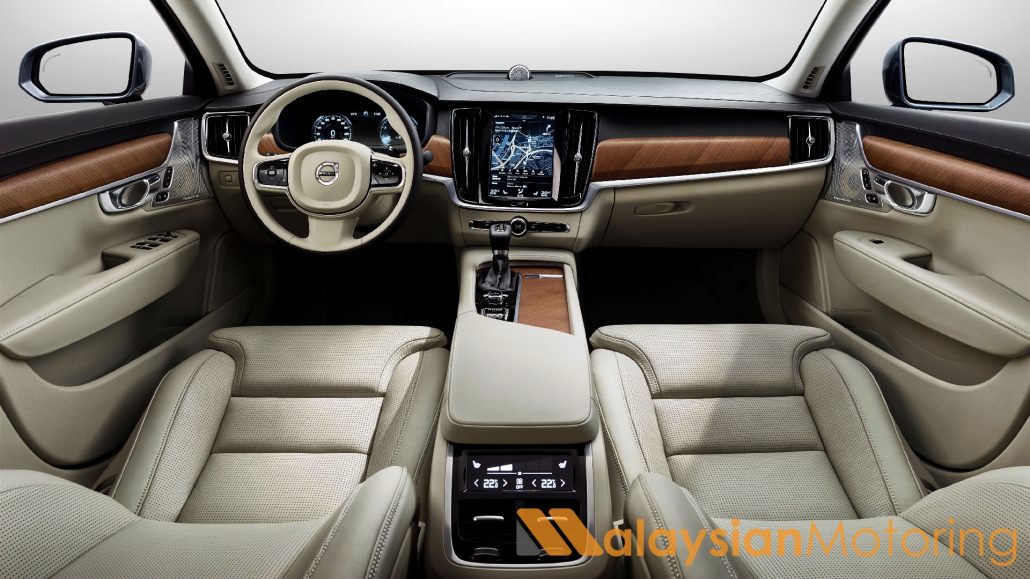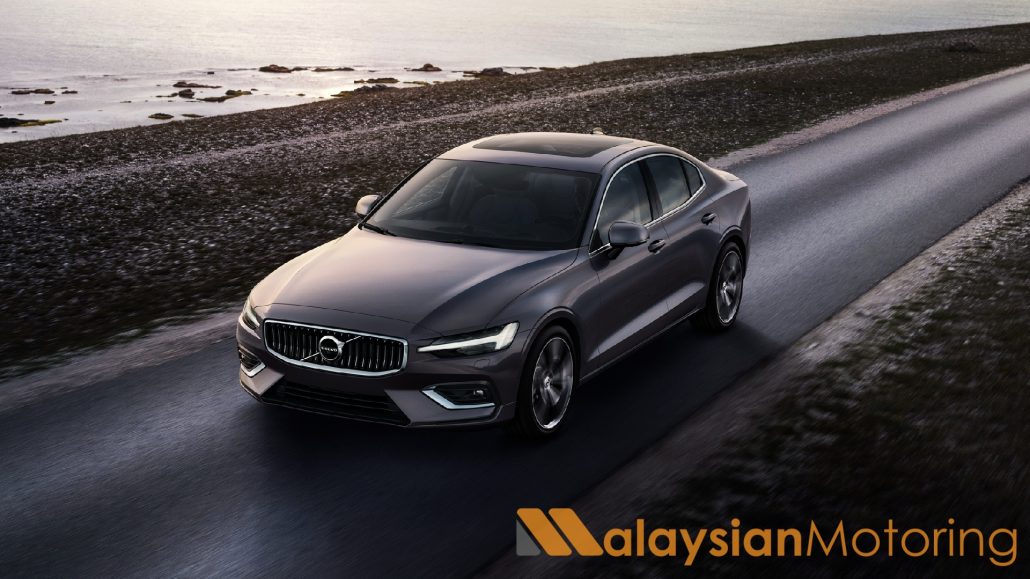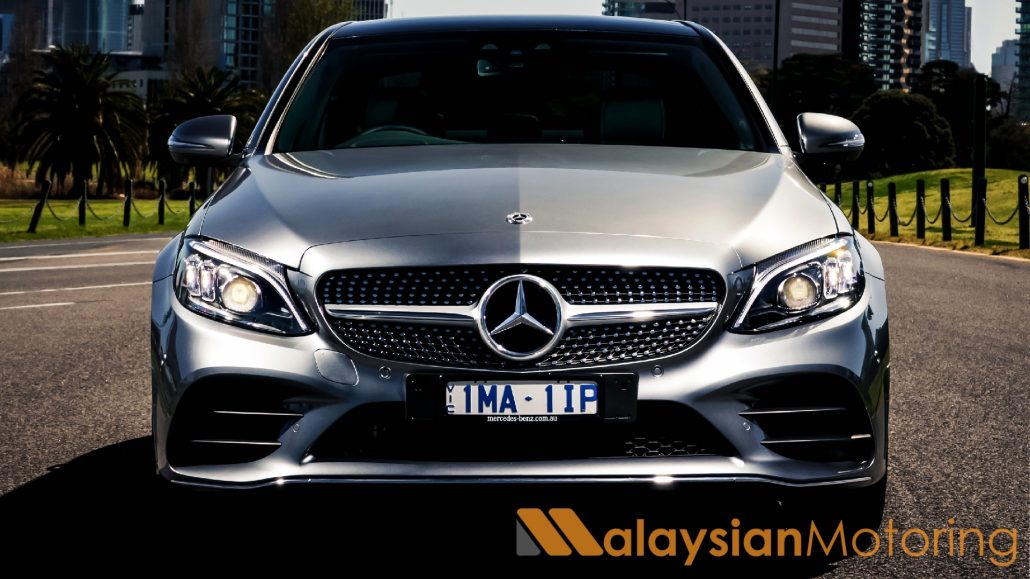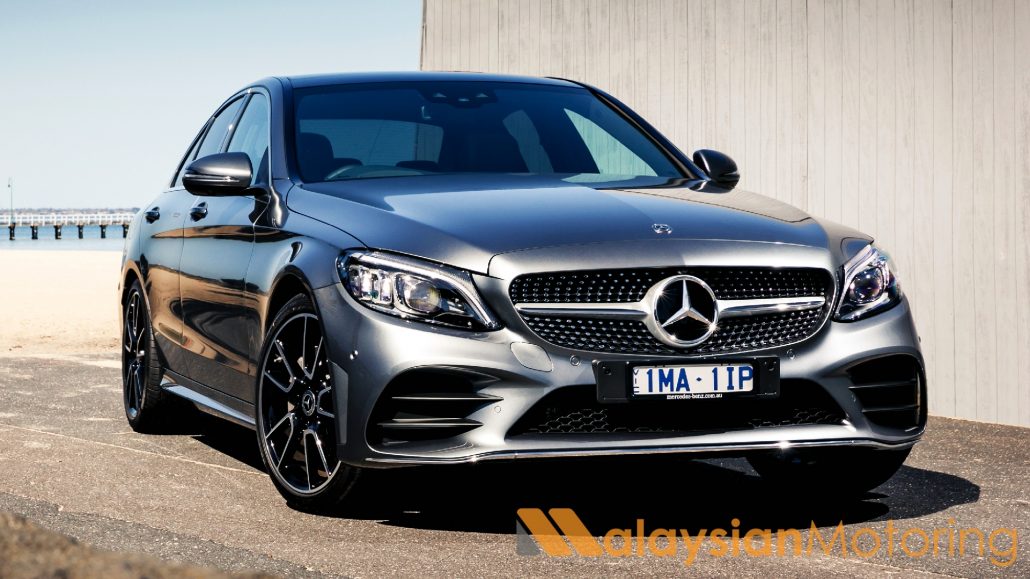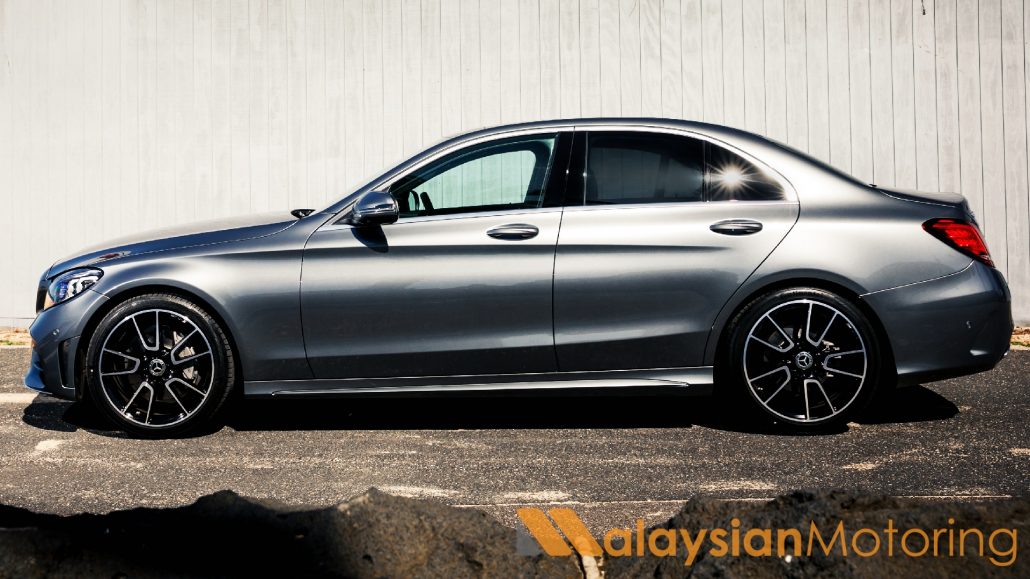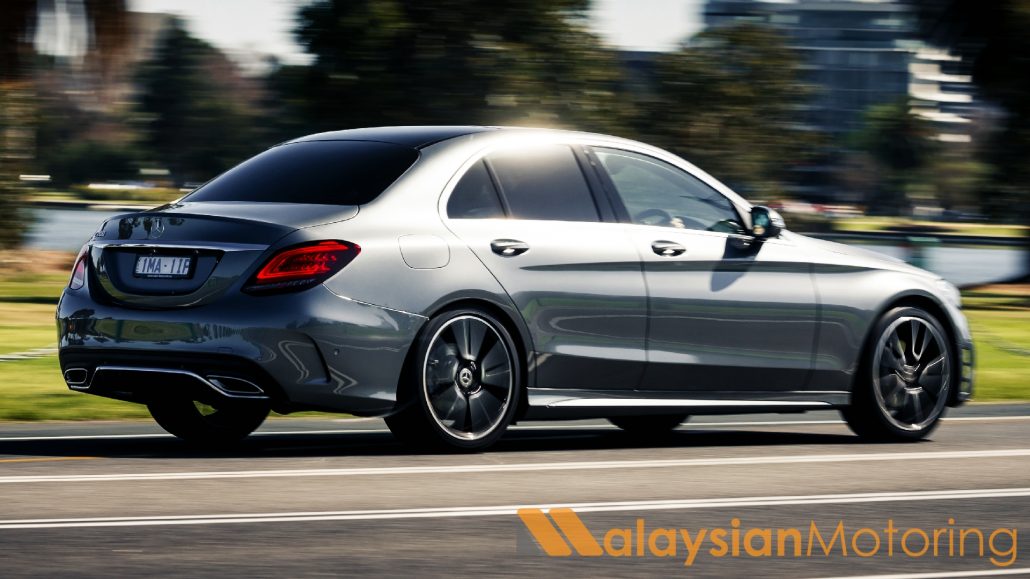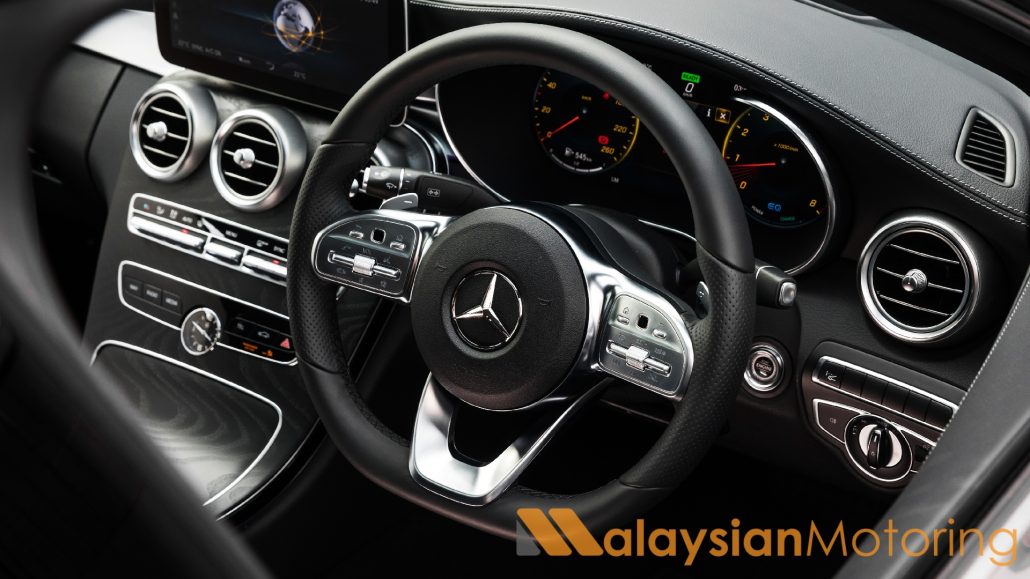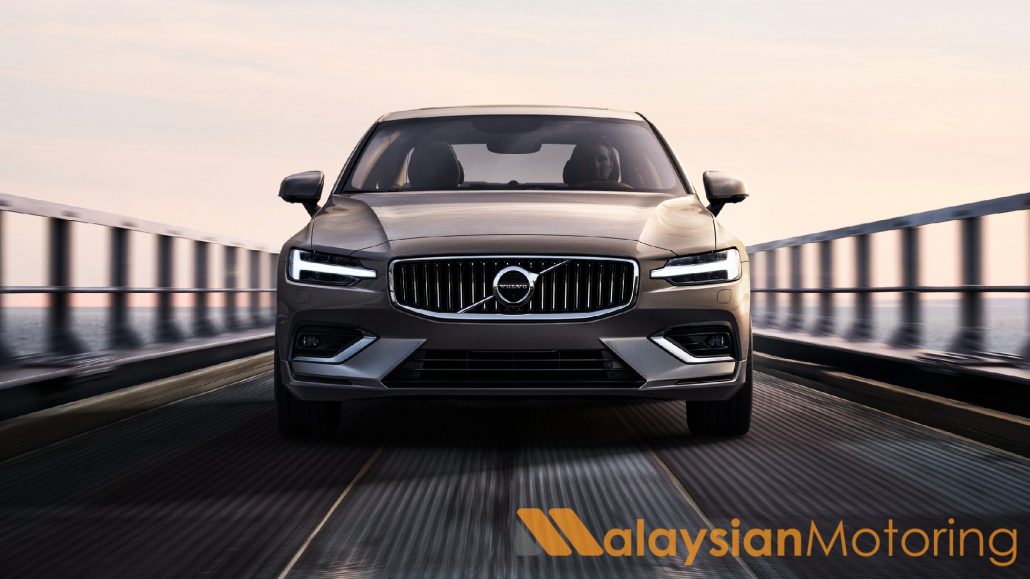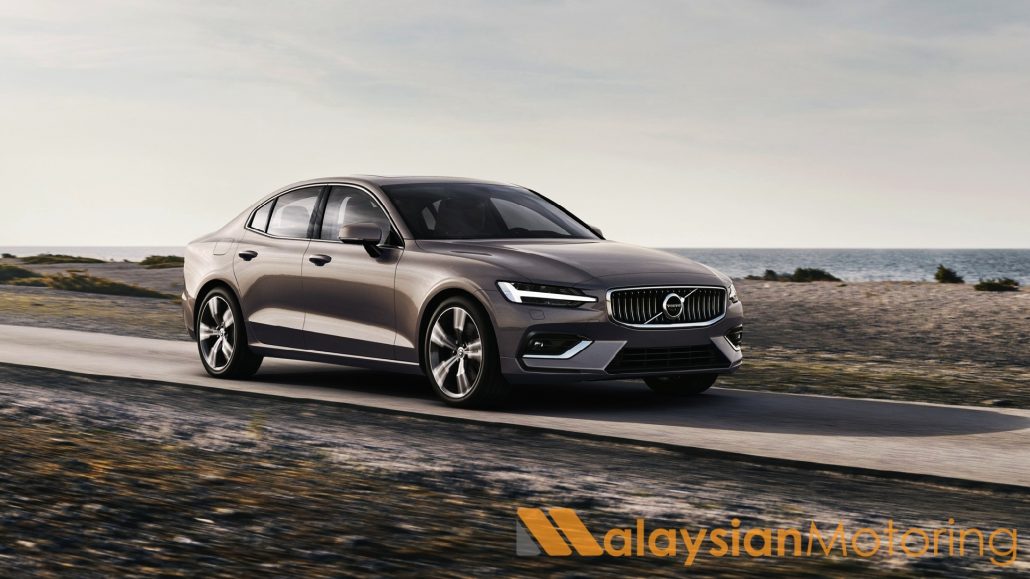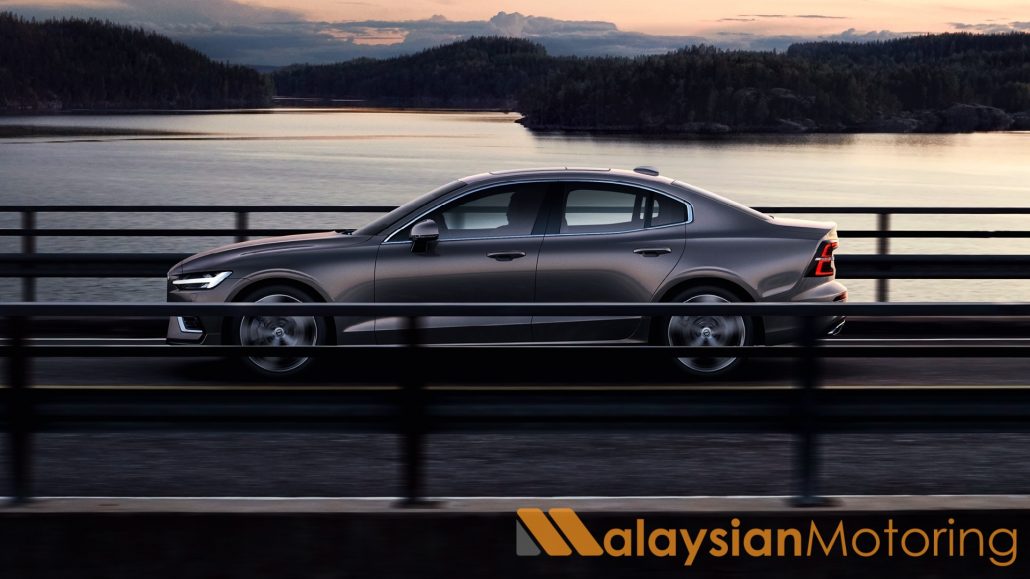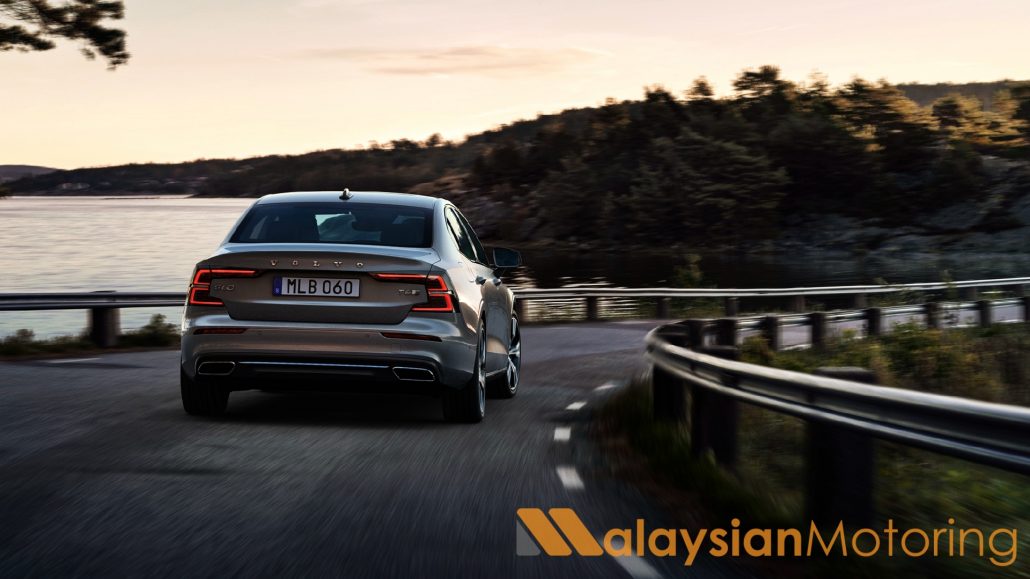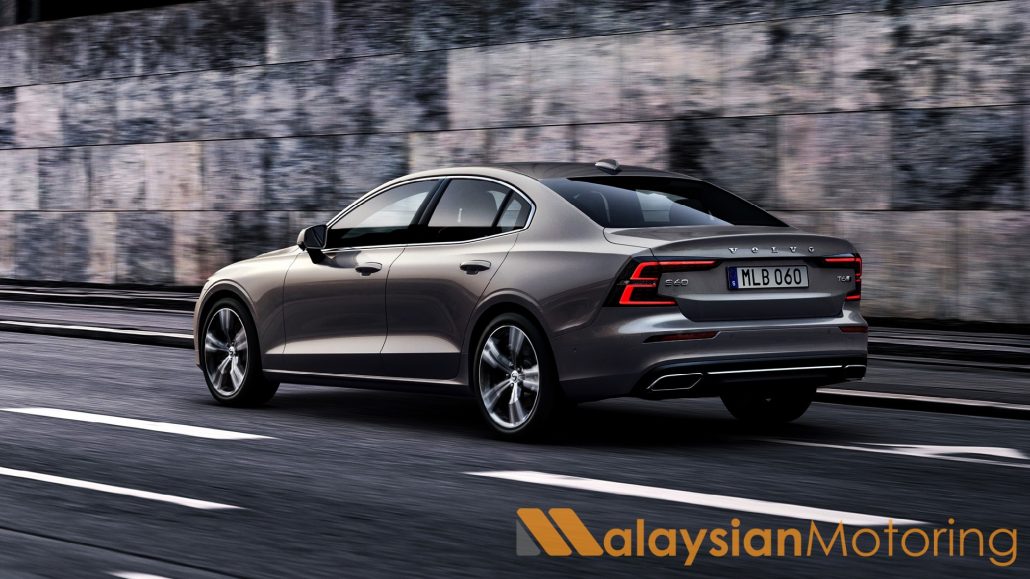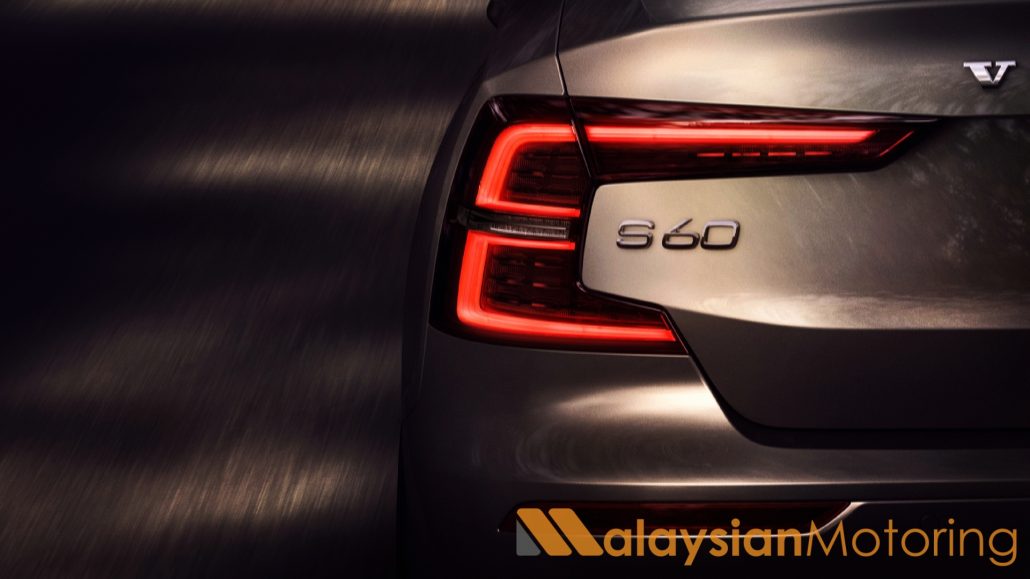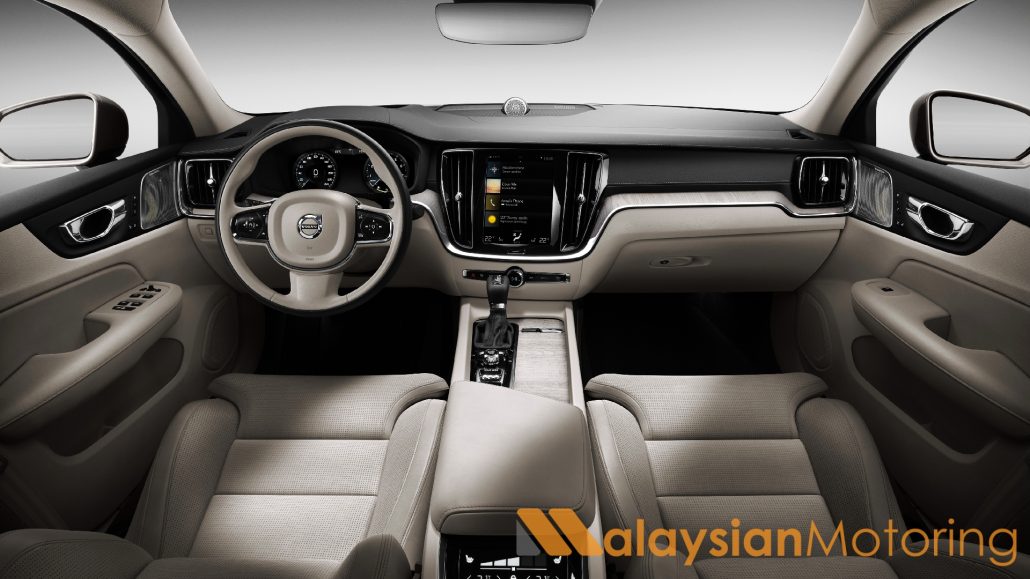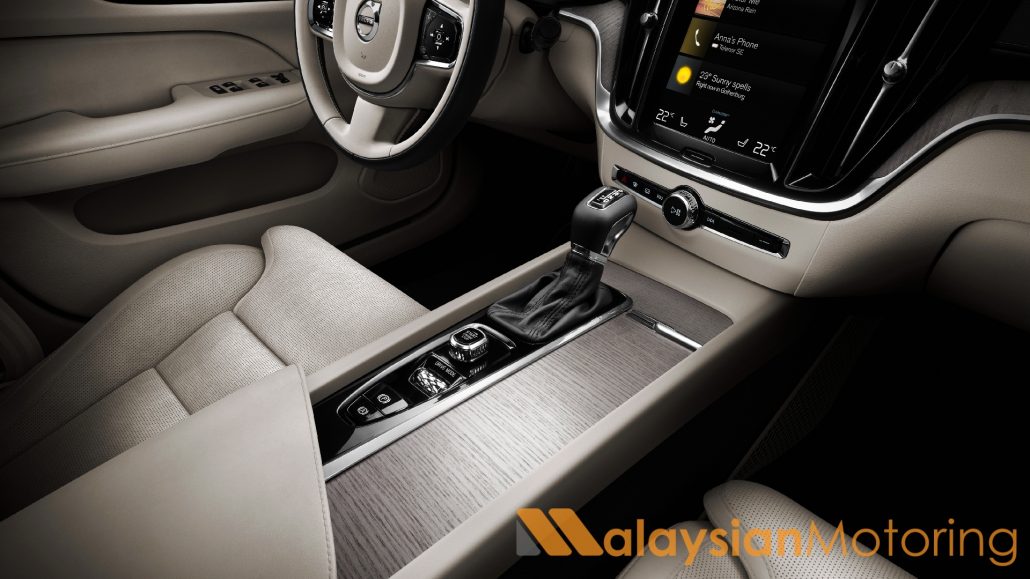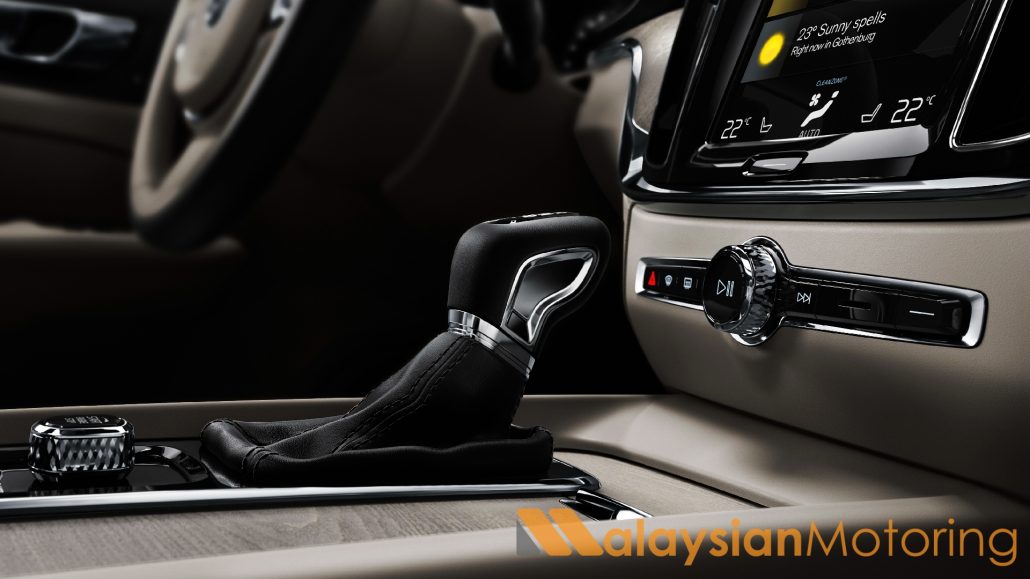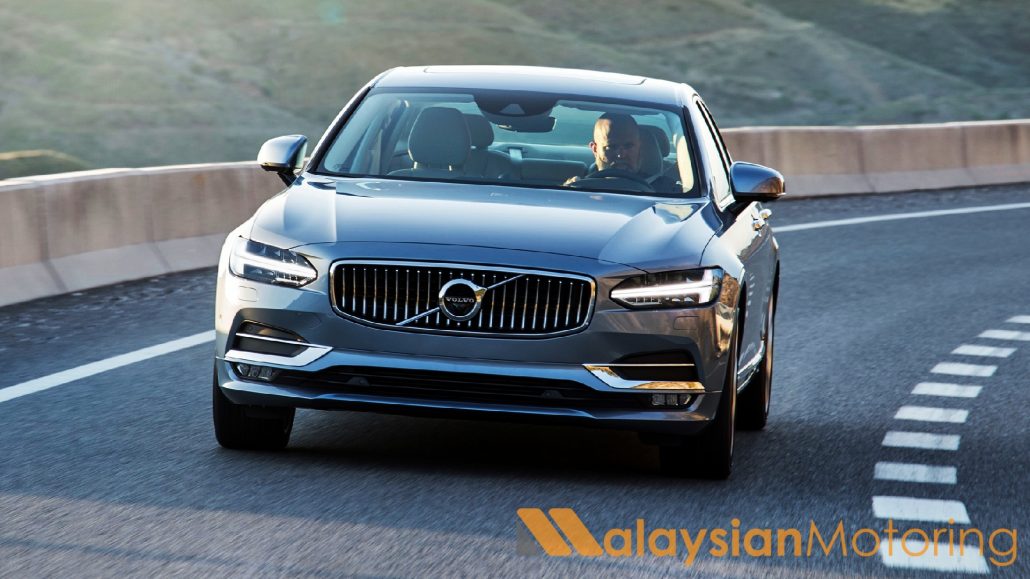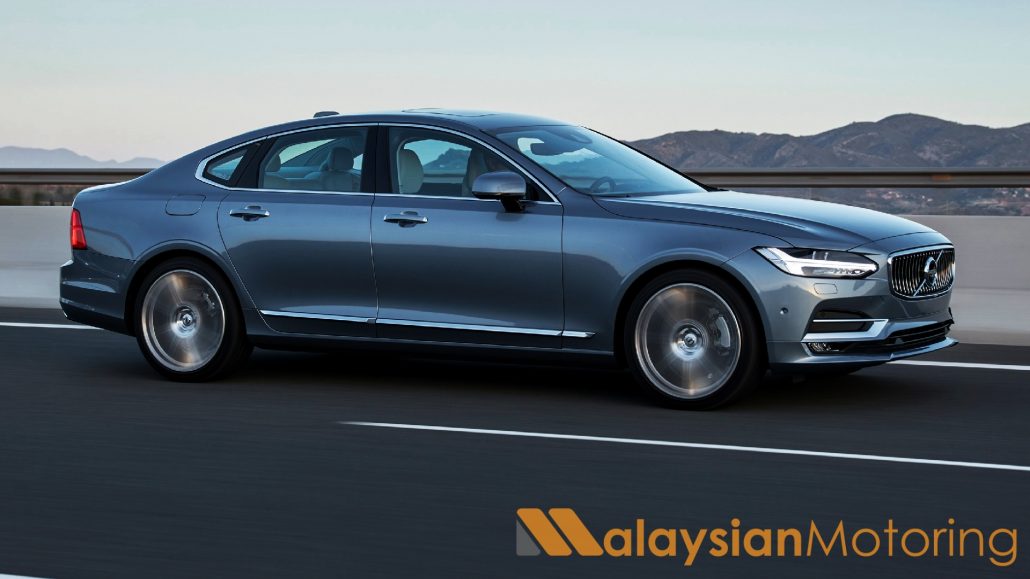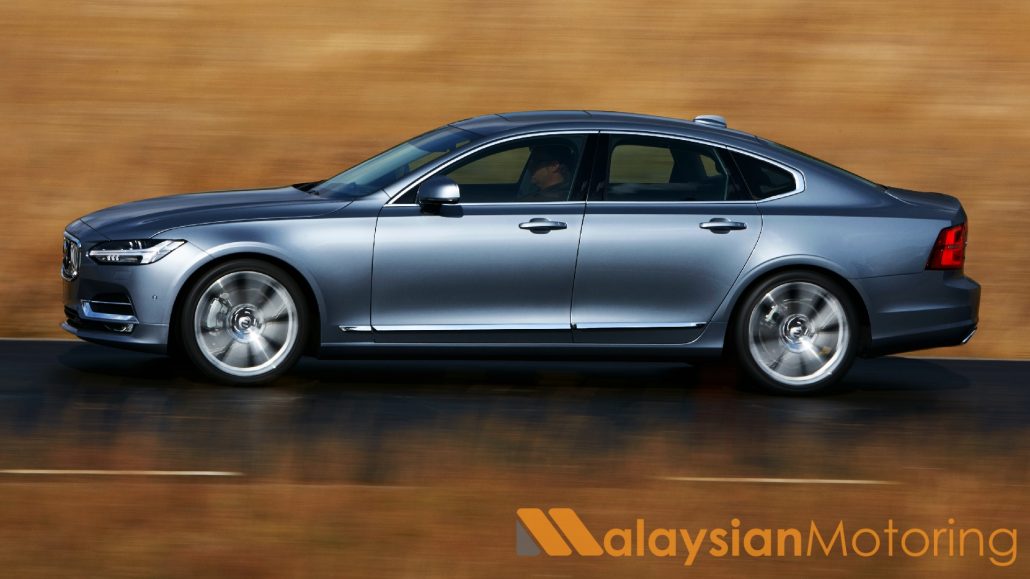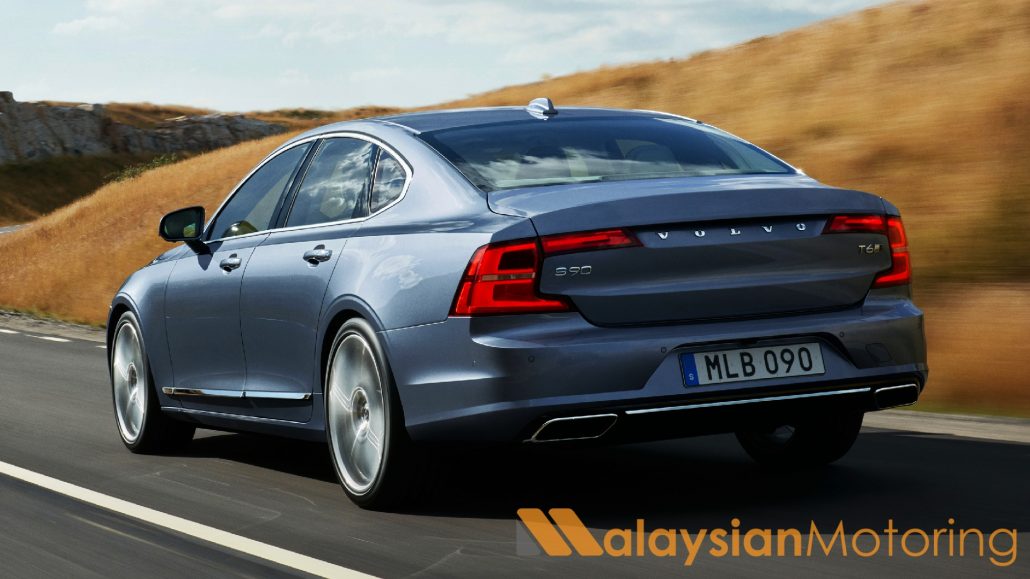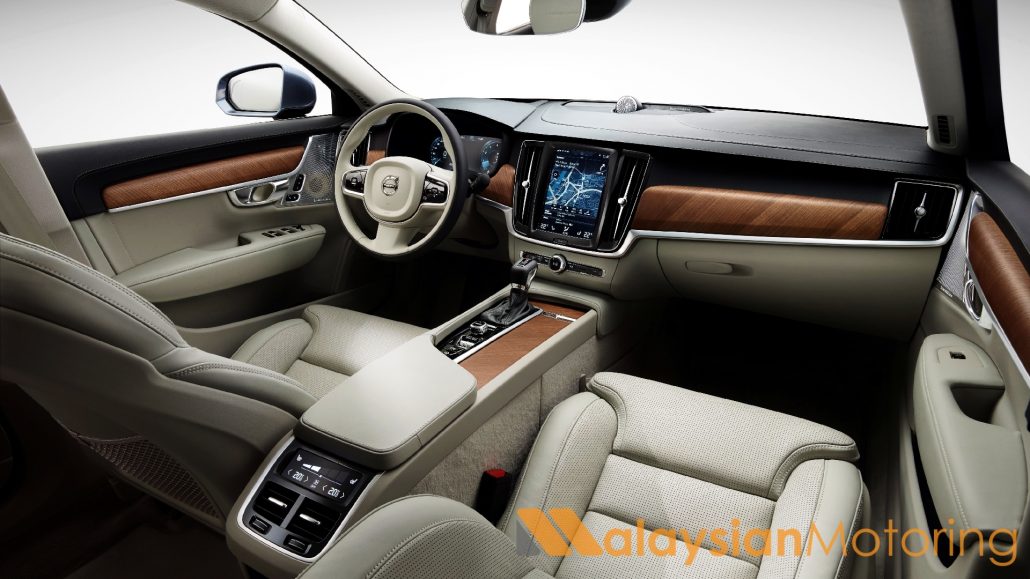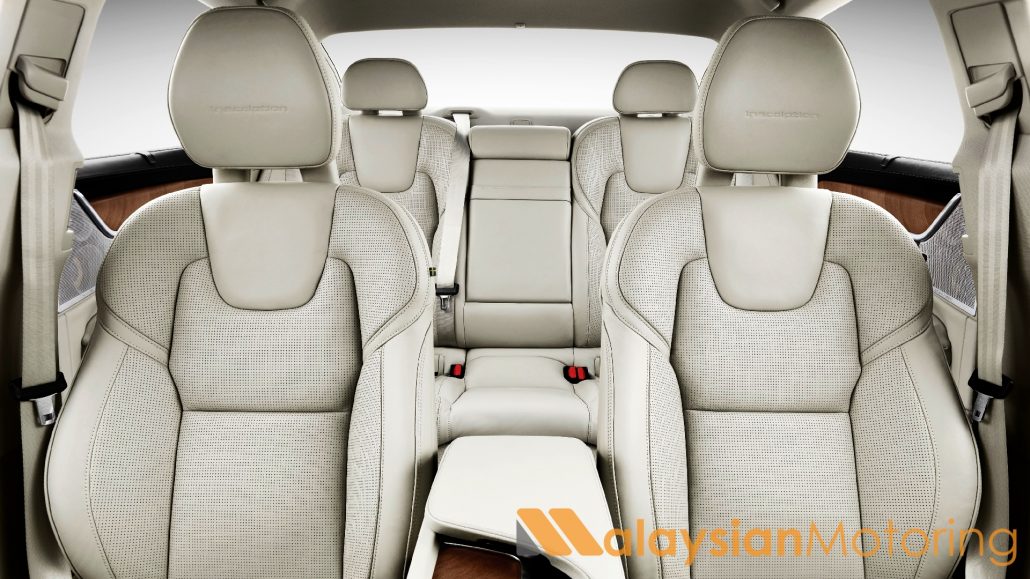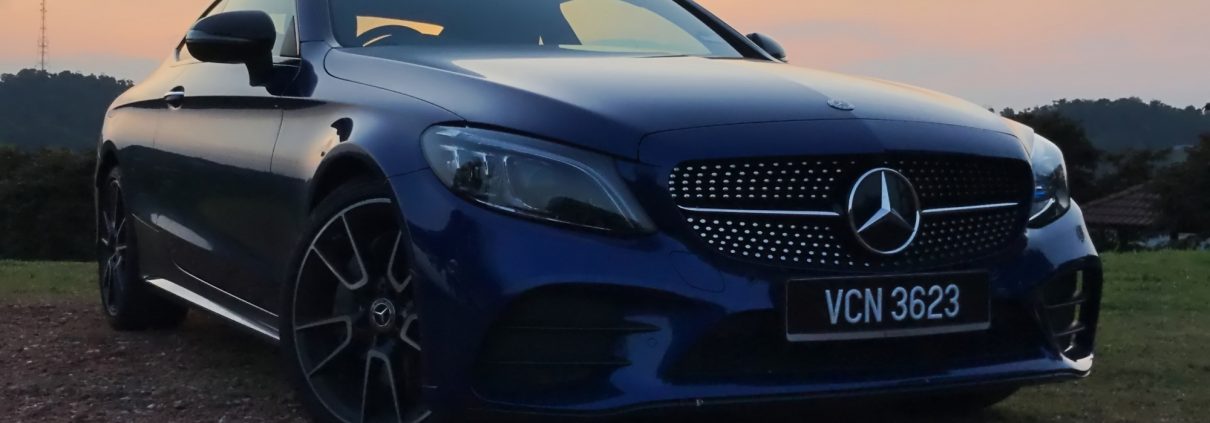2020 Mercedes-Benz GLB200, GLB300, AMG GLB35 Launched, From RM270k
We always want more. And whenever one steps into a compact Mercedes-Benz, you can’t help but want a little more space.
Today, Mercedes-Benz Malaysia answers that call with the all-new, first-ever Mercedes-Benz GLB. A member of Mercedes’ compact car lineup, its diminutive size hides its practicality, with seven seats on offer spread across three rows. That’s right – this is now the most affordable premium 7-seater SUV money can buy.



The GLB is available in Malaysia in three guises – the GLB200, the GLB250, and the Mercedes-AMG GLB35. Power starts at 163hp/250Nm in the 200, while the 250 gives you 224hp & 350Nm. Step up to the AMG and you get 306hp & 400Nm, paired to an all-wheel drive system. All cars get an 8-speed dual-clutch automatic as standard and, if it all feels a bit familiar, you’ll know that this is exactly the same spread as seen in the A-Class lineup.
That also means that the base GLB200 gets its motivation from a 1.33-litre motor, while its bigger brothers use the same 2.0-litre turbocharged 4-cylinder.
“The GLB is the most versatile SUV in our premium SUV range. Its design lends the GLB an unmistakable SUV character, showcasing its classic off-road boxy design from its big brother, the G-Class. With a boot capacity of up to 1805L and a third row of seats, it’s the perfect companion for those who desire a life with more possibilities.”
– Michael Jopp, Vice President (Sales & Marketing, Passenger Cars), Mercedes-Benz Malaysia
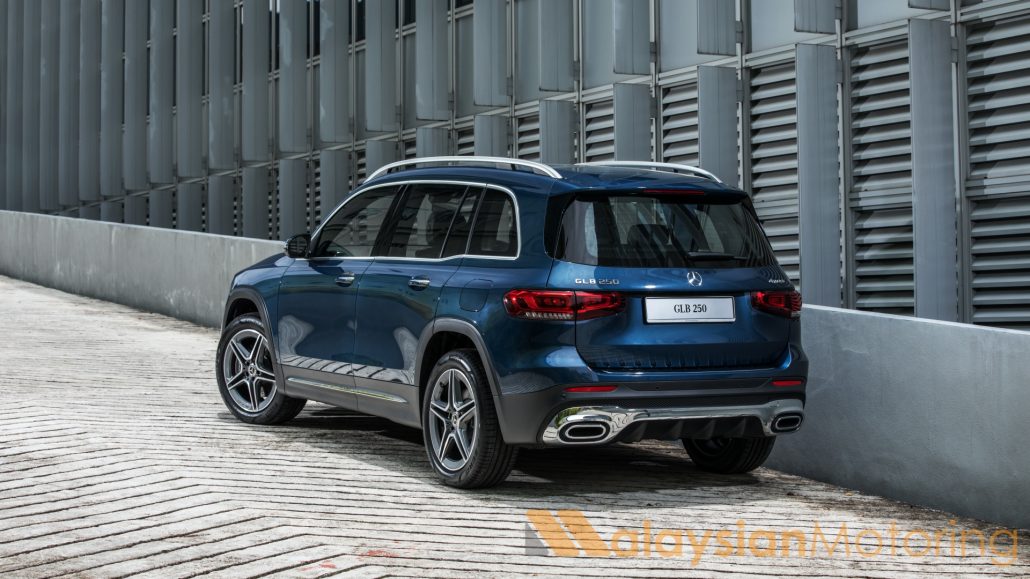
The powerful proportions of the GLB underscore the off-road focus of the design: the design emphasises surface, and reduced lines and precise panel gaps. This conveys superior sportiness and modernity. The upright front section with its striking headlamps is clear evidence of the off-road genes, as are the short overhangs at the front and rear. The front apron with visual skid plate emphasises the unmistakable SUV character. Another key feature of the front-end design is the distinctive air intakes in the front apron that are tailored to the contours of the radiator grille.
On the sides, the GLB is donned with attached panels under the doors and the wheel arches that further underscores the off-road impression and at the same time, protect against stone chips. The muscular and sensuously contoured vehicles shoulder dominated the side view, an effect reinforced by the rising beltline at the height of the C-pillar.
The GLB has a clear rear-end emphasising width with two-piece tail lamps and reflectors relocated to the bumpers. The precise interior design of the tail lamps also ensures a high recognition value at night. The elevated roof rails are made of polished aluminium.


At 2,829mm, the GLB has ten centimetres more wheelbase than the new B-Class, making it the largest of Mercedes-Benz’s compact offerings. Together with the function-oriented greenhouse, it allows the GLB to offer a generous amount of space. The headroom in the first seat row is 1,069mm – “optimum in this segment,” claims Mercedes. And at 967mm, the effective legroom in the rear of the 5-seater is at an especially comfortable level.
Cargo is rated at a minimum of 570L with all the seats up, but can be expanded to a maximum of 1805L. Backrests can be adjusted as standard, while the second row seats can also be rolled forwards and backwards in order to fully maximise the cargo area. For the third row, the GLB offers comfortable seating for passengers up to 1.68M in height, though the third row can also be used for children thanks to the standard ISOFIX mounts with top tethers. There are also drinks holders for the third row, along with USB charging ports – just to make sure you don’t feel like you’re in the cheap seats.
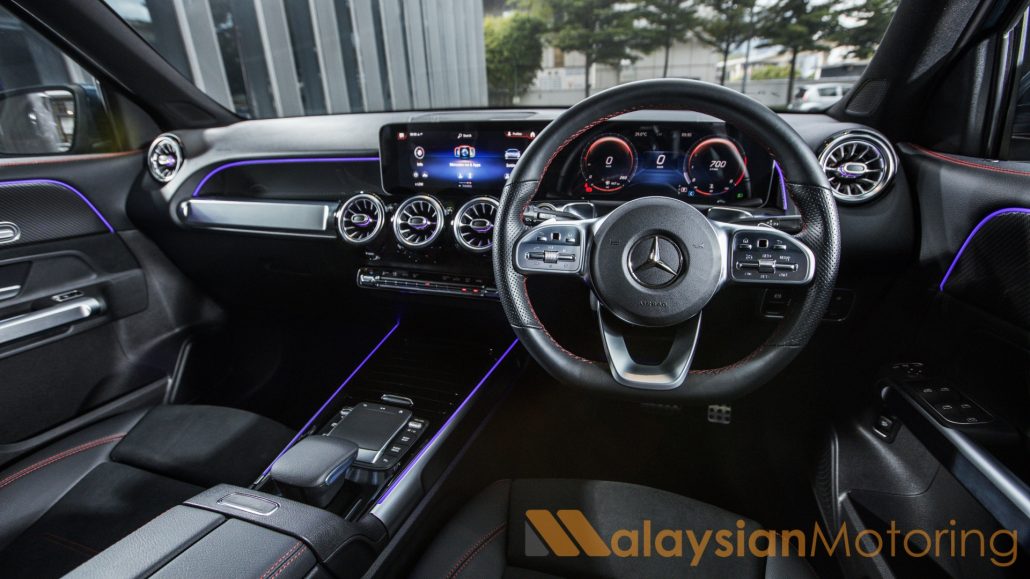
The front-half of the cabin is very familiar as a compact Mercedes, with the dual-display widescreen cockpit that was first presented in the A-Class hatchback when that was launched. The GLB will offer both screens in full-size and full-resolution (thankfully), with inputs split between the touchpad on the centre console, the touchpads on the steering wheel, and the central touchscreen itself. The screens run the full Mercedes-Benz User Experience or MBUX suite, with a myriad of display customisations available to the driver. With MBUX comes MercedesMe Connect, which pairs an app up with your car to allow you to remote-start it, pre-condition it, lock/unlock it, and check its status via your mobile phone.
Safety is something the GLB doesn’t overlook, by offering Active Braking Assist with turning-off function. When the driver intends to turn off across an oncoming lane, the GLB can brake automatically if it detects a potential collision. Braking intervention takes place when the driver hits the turn signal, and the car can be brought to a halt before it passes the lane markings. If you don’t indicate the system doesn’t flick on – so remember to hit that turn signal stalk, yeah.
The GLB also offers active parking assist too, which makes living with the GLB an even easier affair.
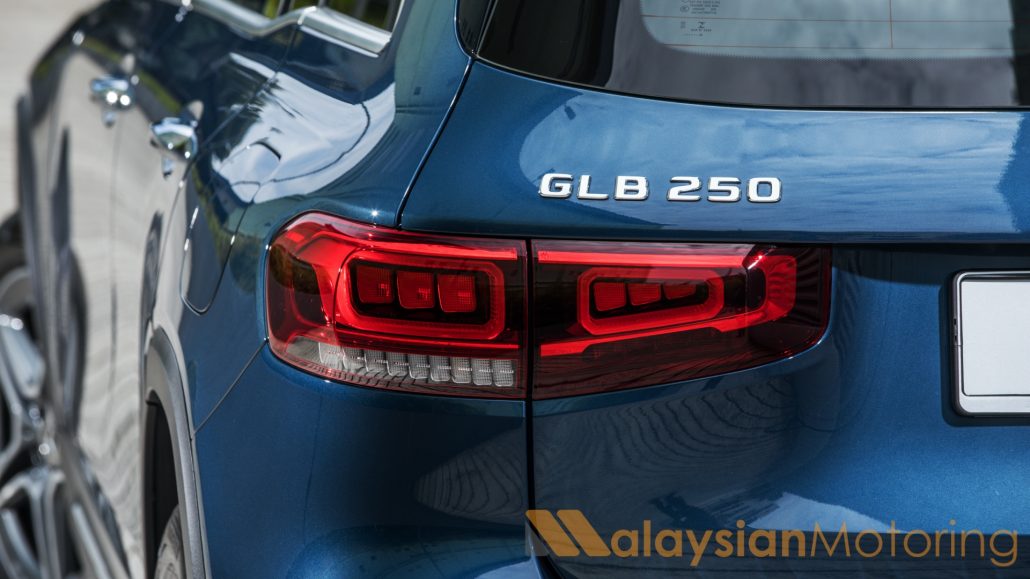
Prices for the new Mercedes-Benz GLB start at RM269,118.15 for the GLB200, while the GLB250 AMG-Line retails for RM318,009.26. If you’re after all-wheel drive or more performance, the Mercedes-AMG GLB35 4Matic will set you back RM363,136.52. All prices are inclusive of the current SST reduction as part of the PENJANA programme, and is effective until December 31st 2020.
All new Mercedes-Benz GLBs will be covered by Mercedes-Benz’s standard warranty program, which covers your car for 4-years with no mileage cap.
GALLERY: 2020 Mercedes-Benz GLB200 Progressive Line
GALLERY: 2020 Mercedes-Benz GLB250 AMG-Line
GALLERY: 2020 Mercedes-AMG GLB35 4Matic


